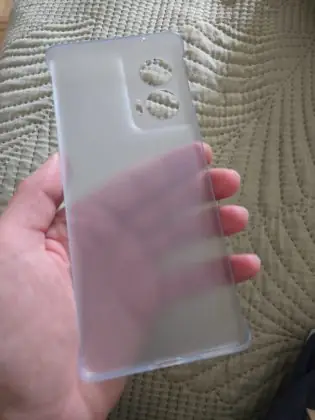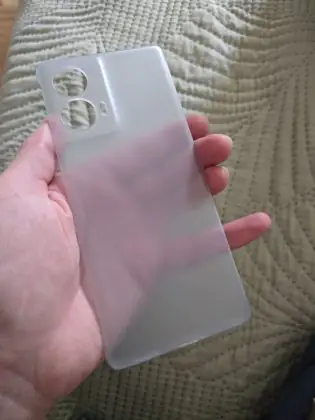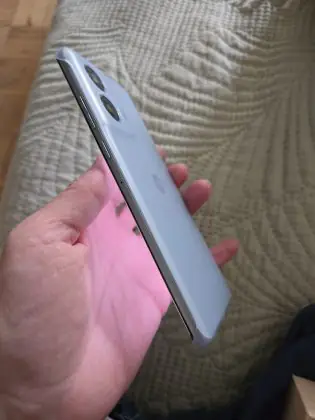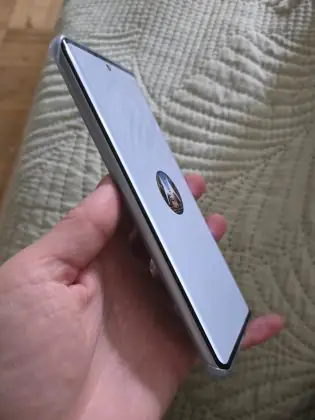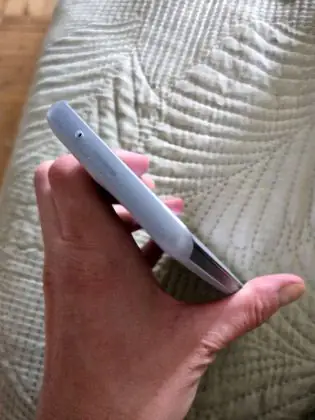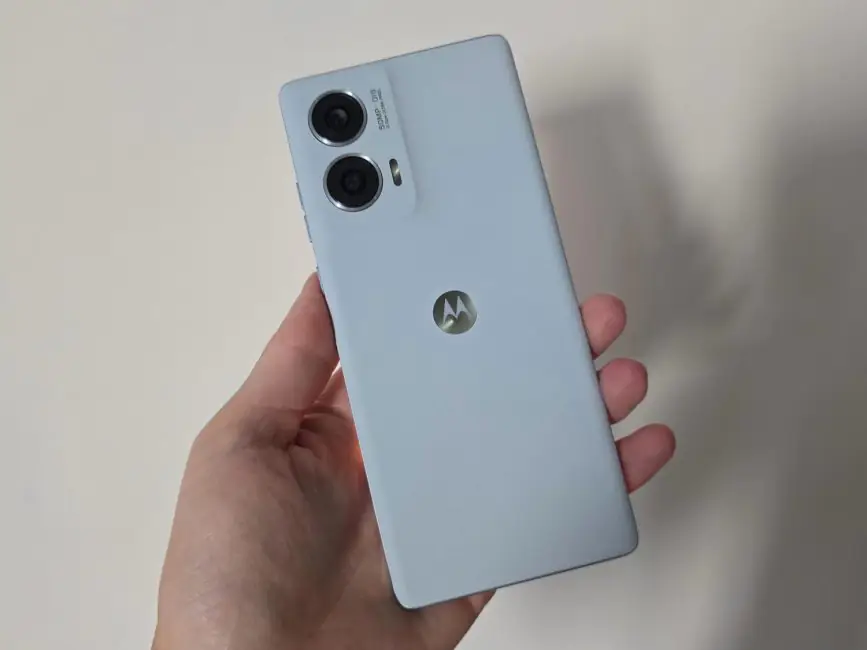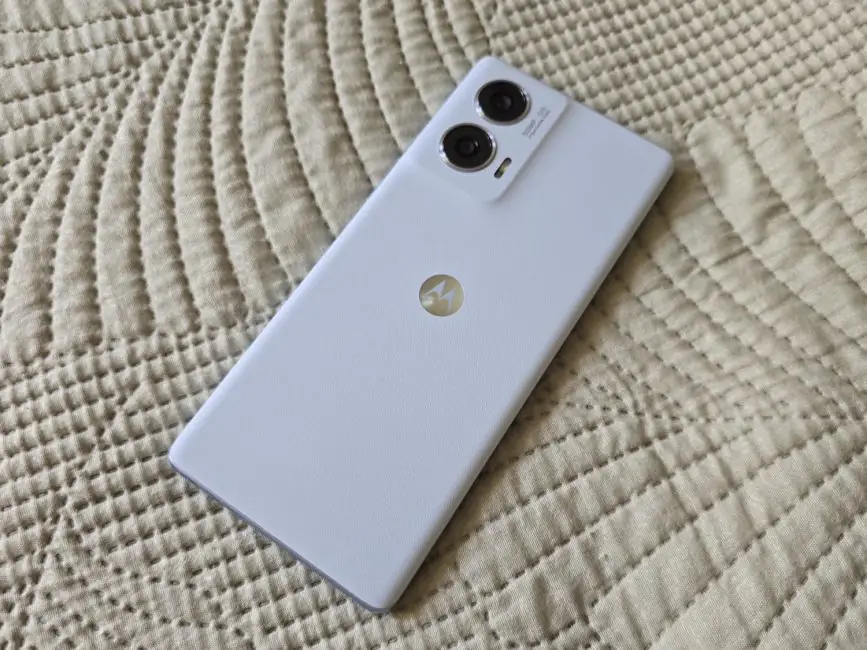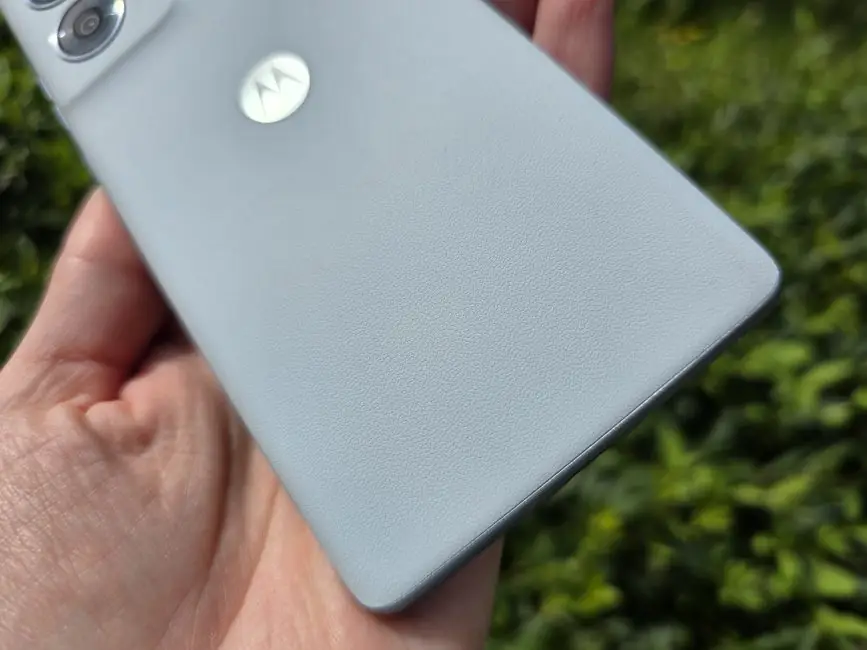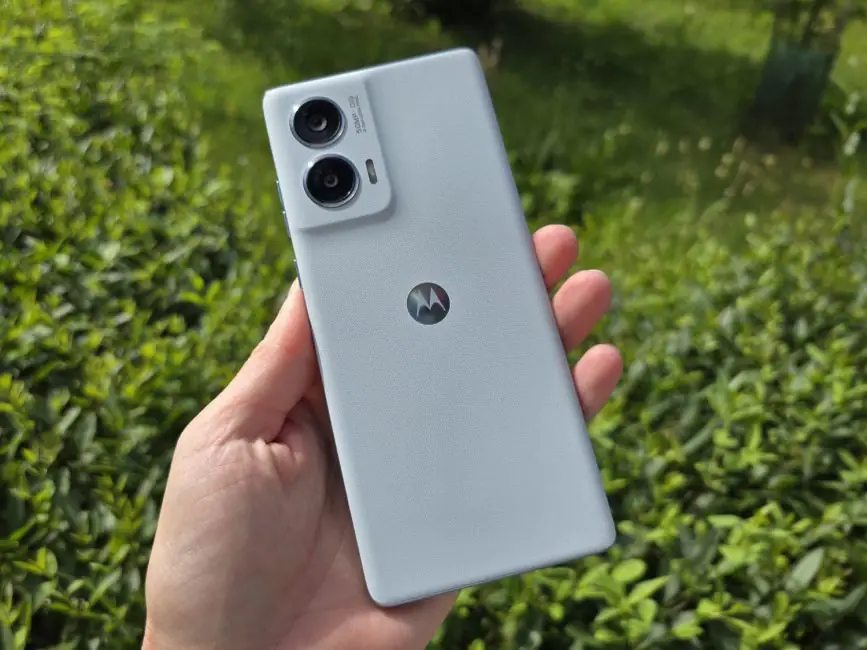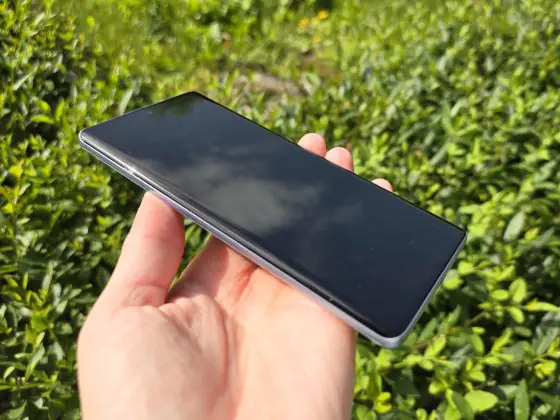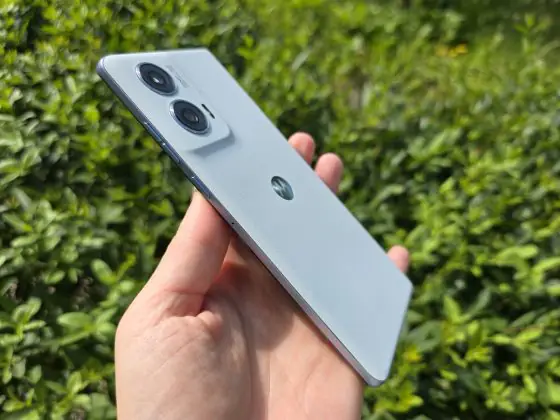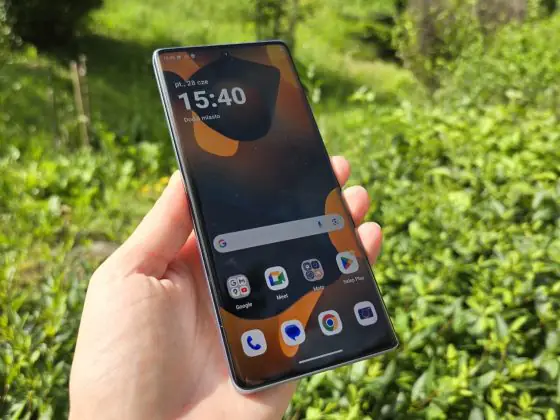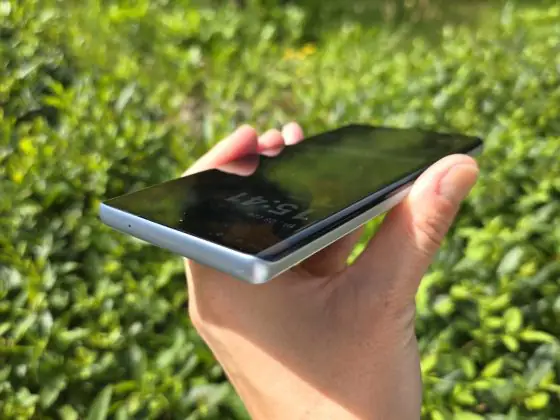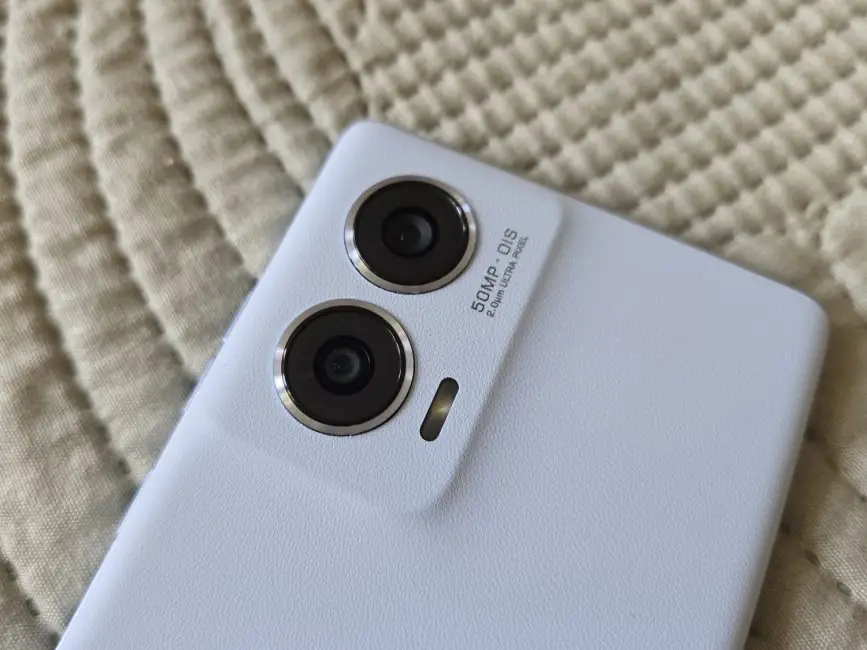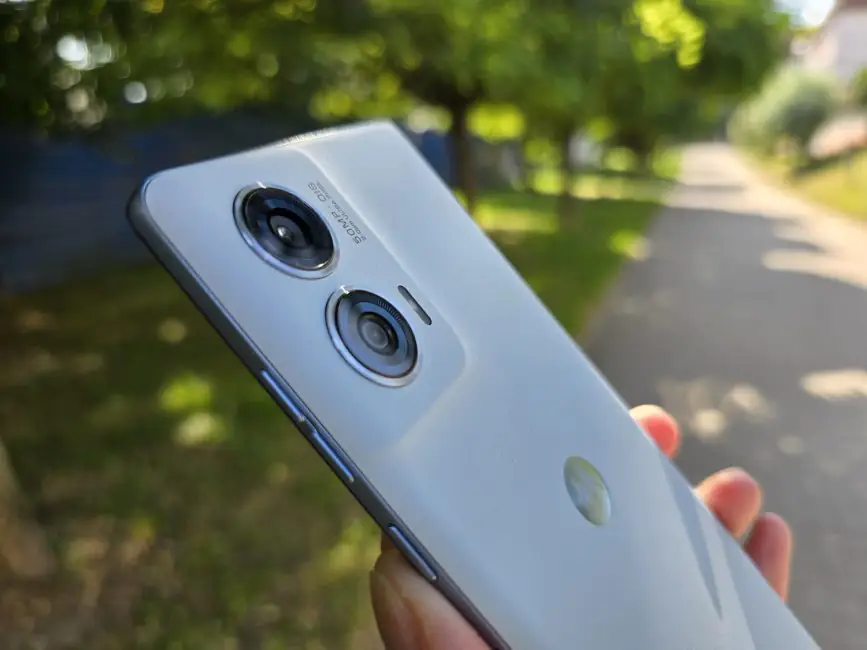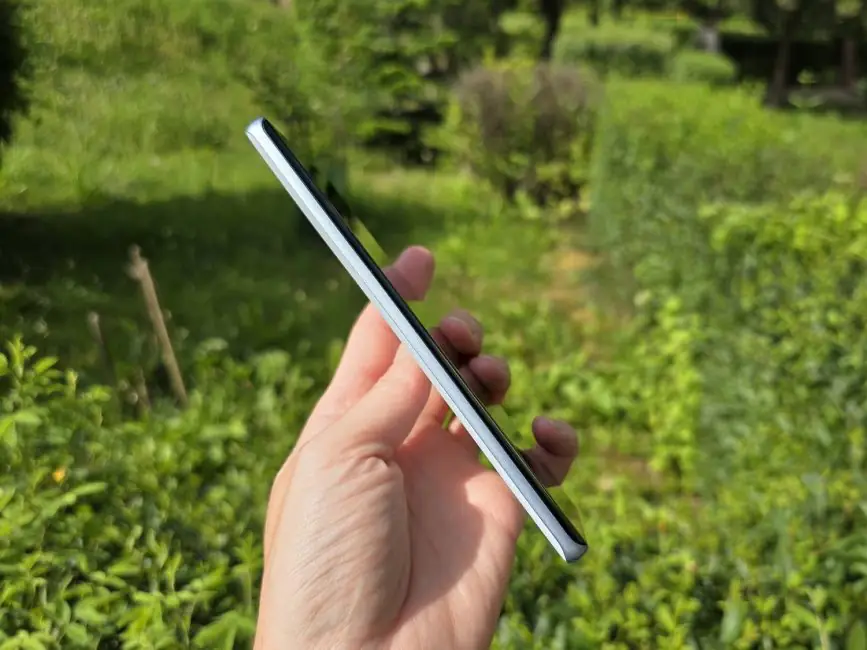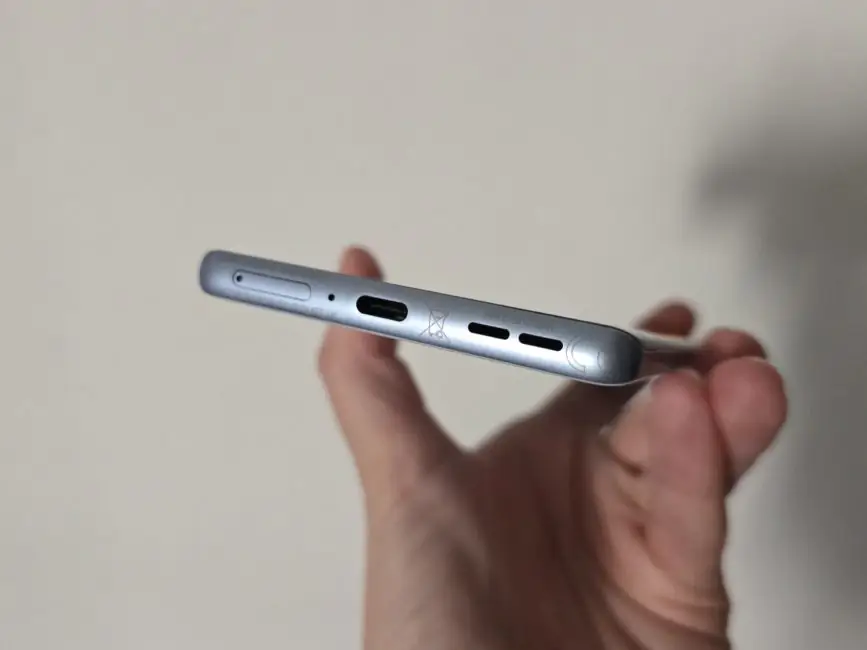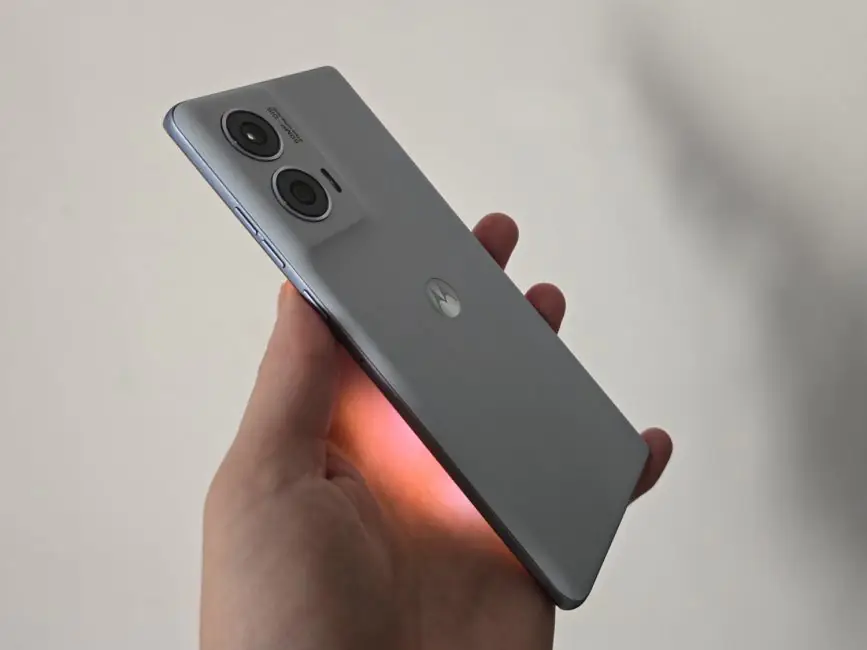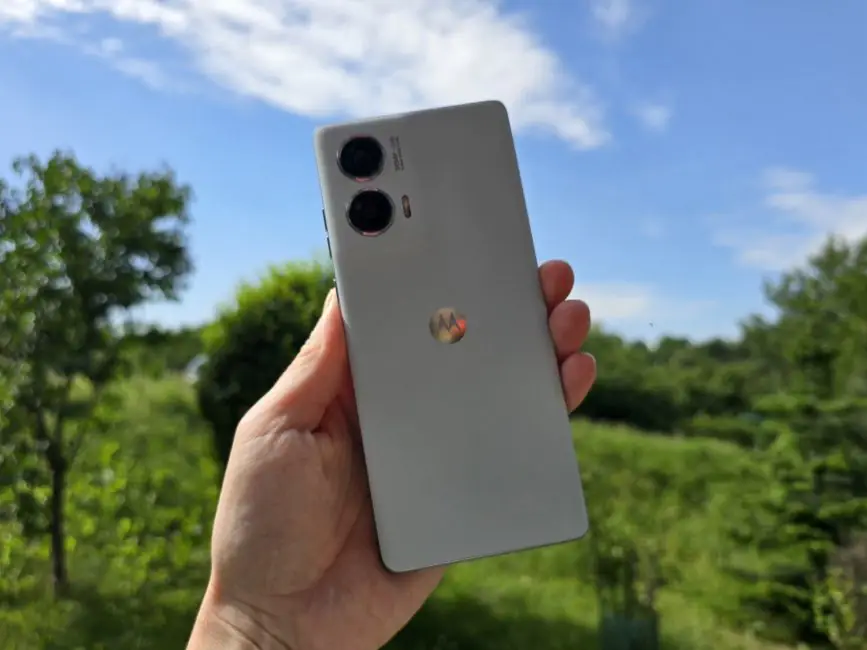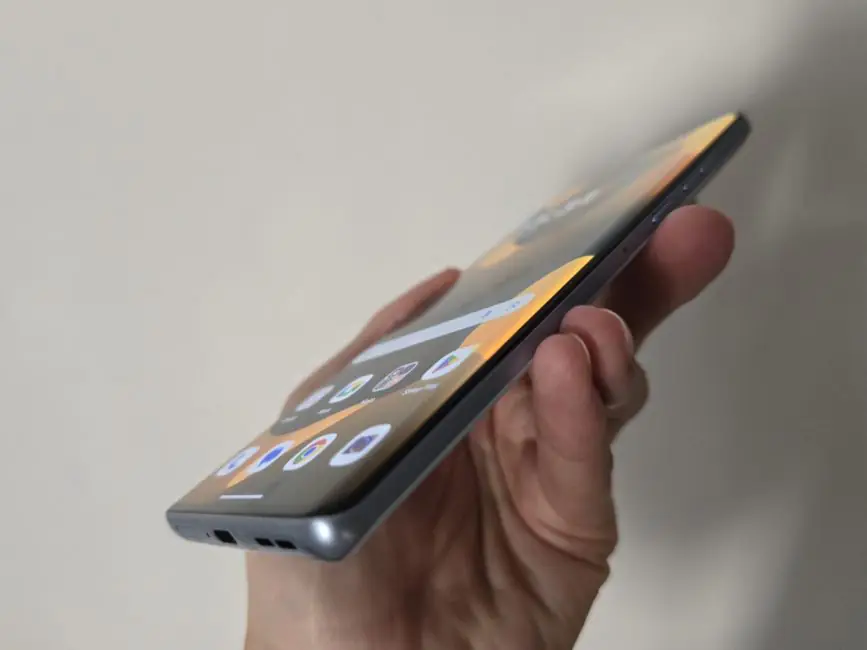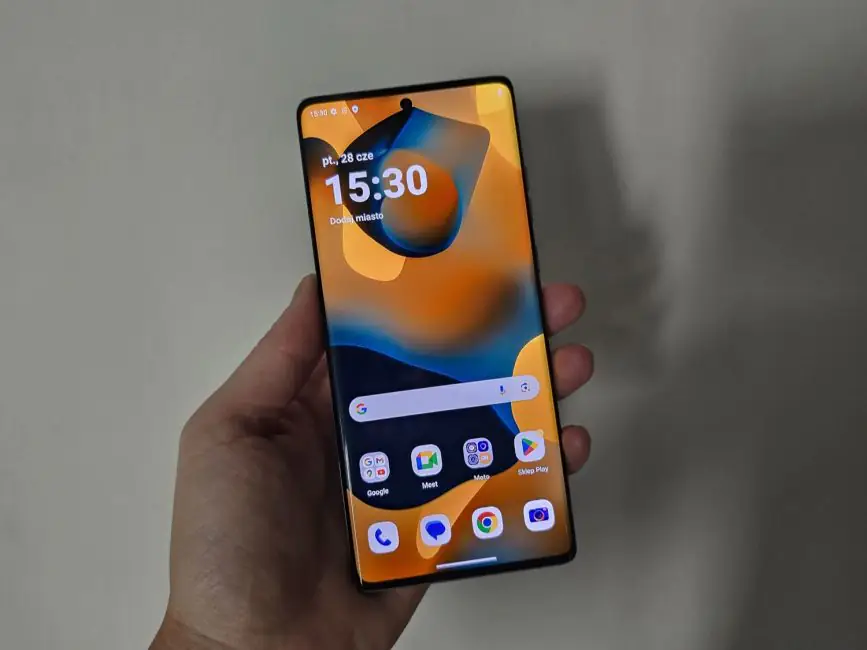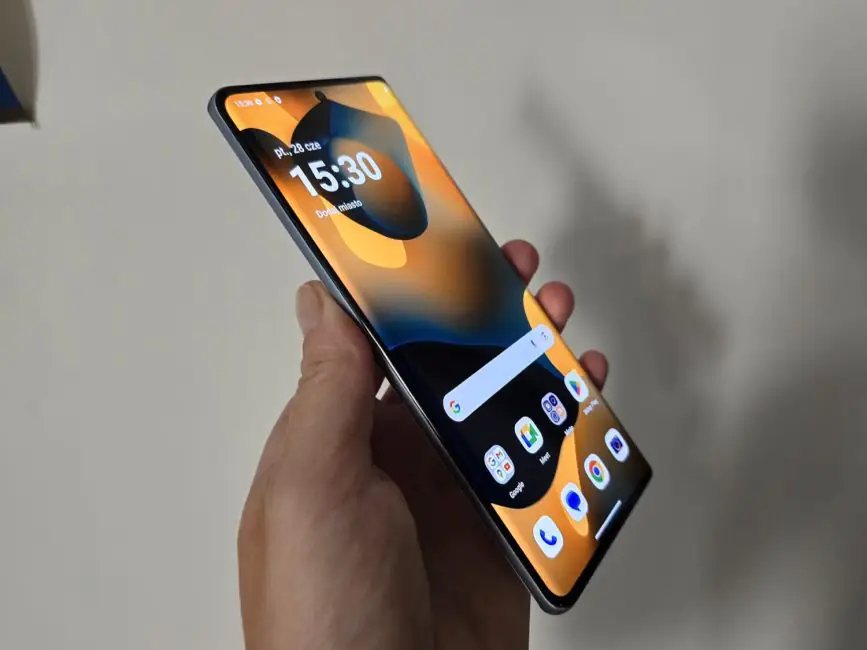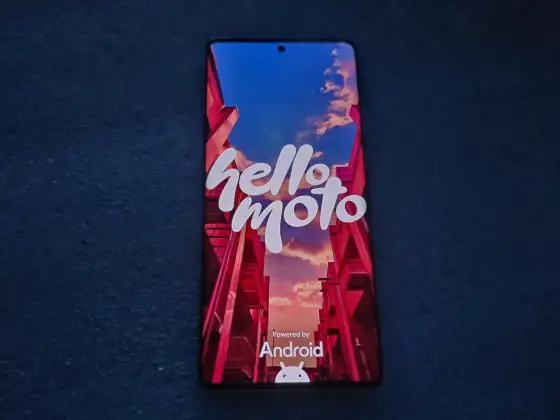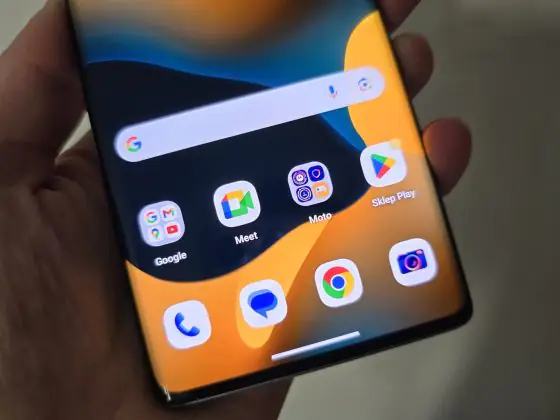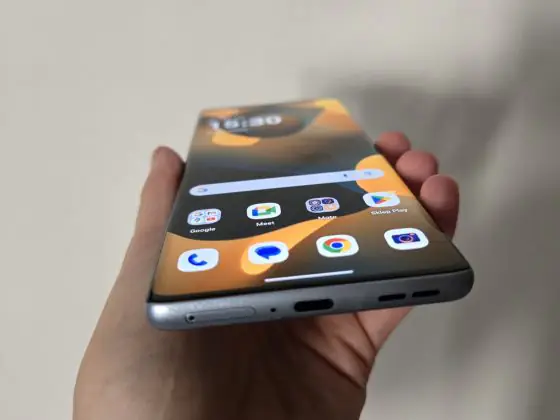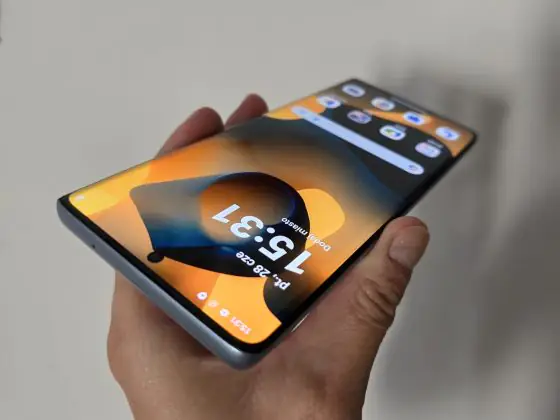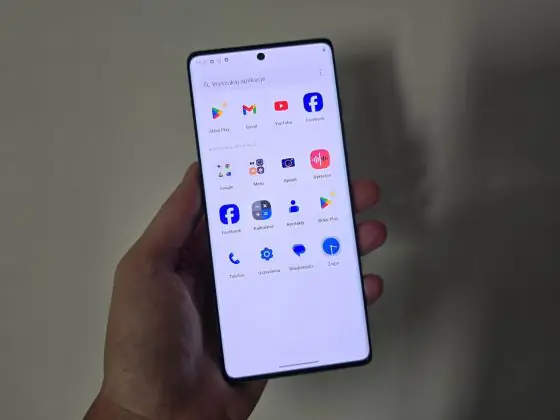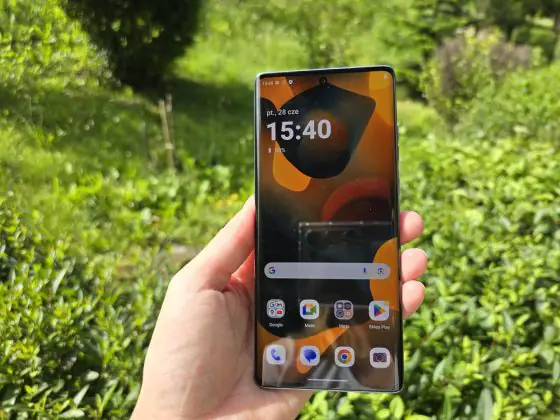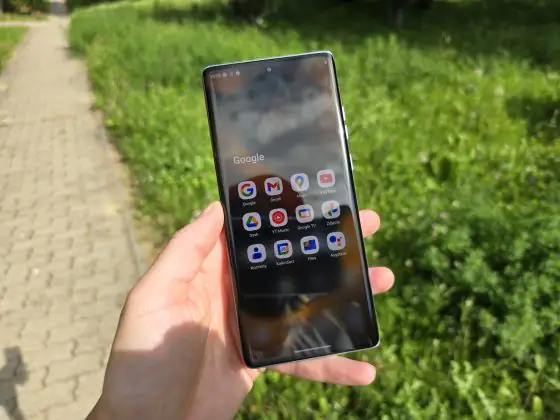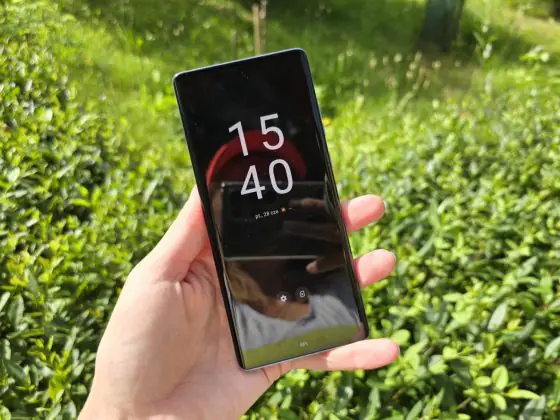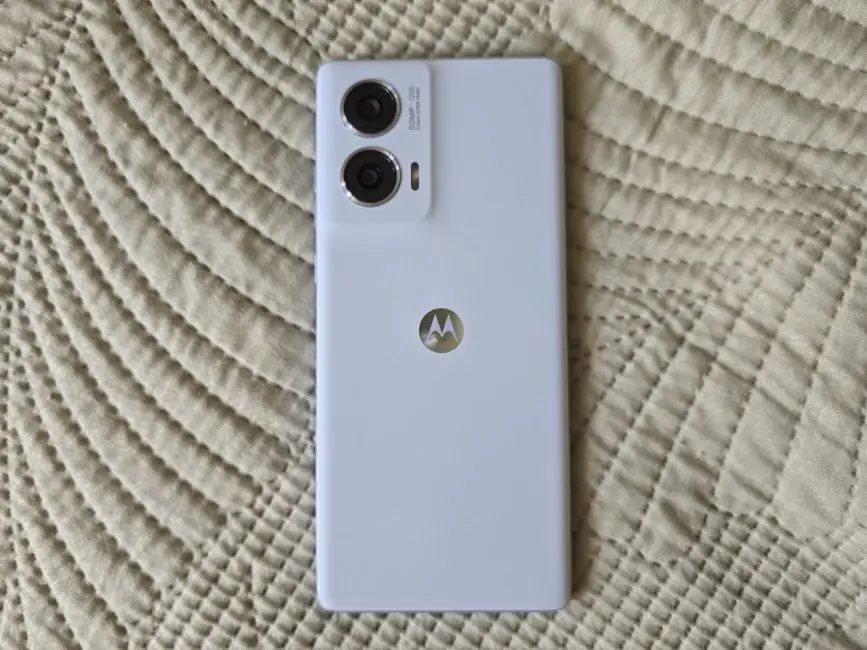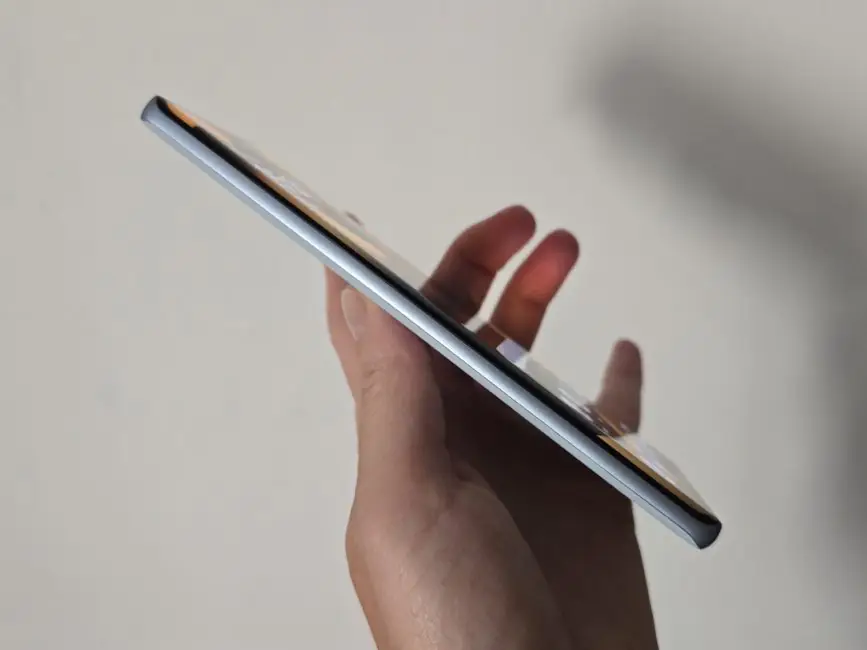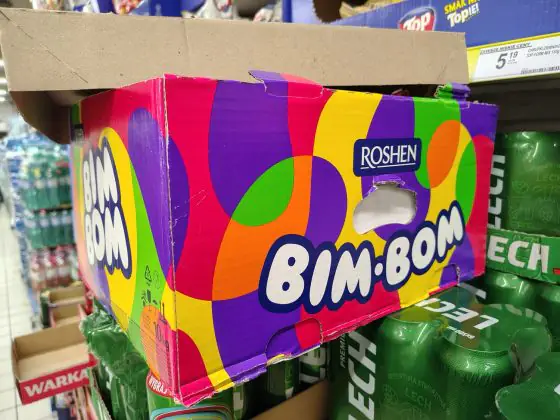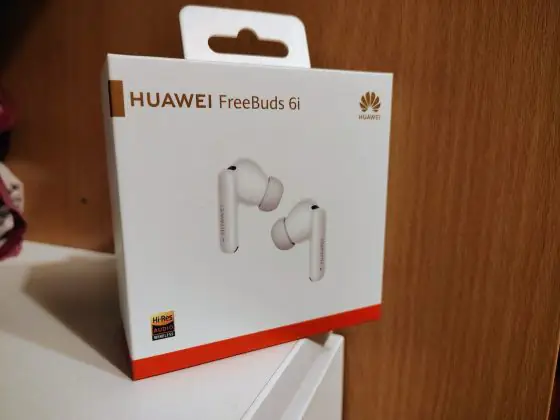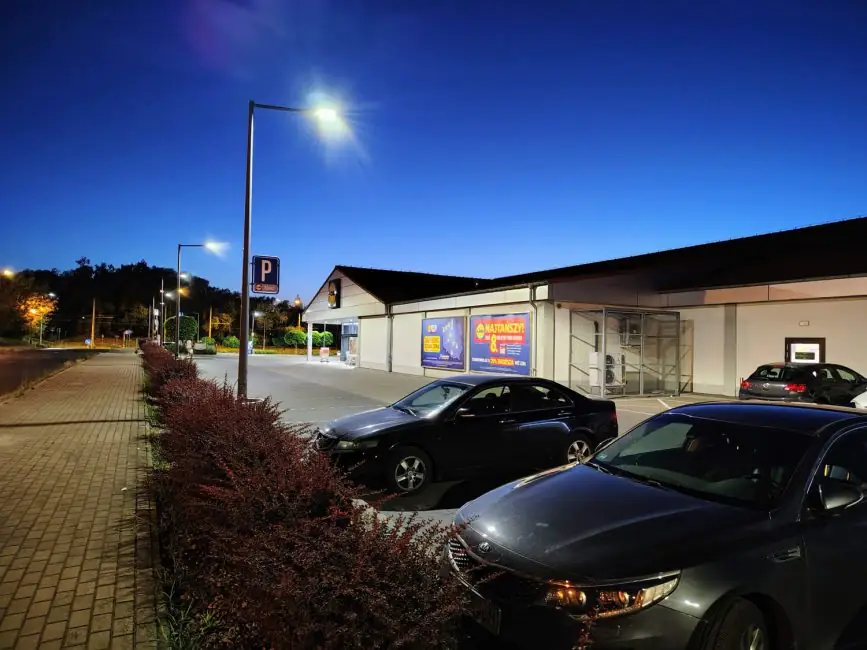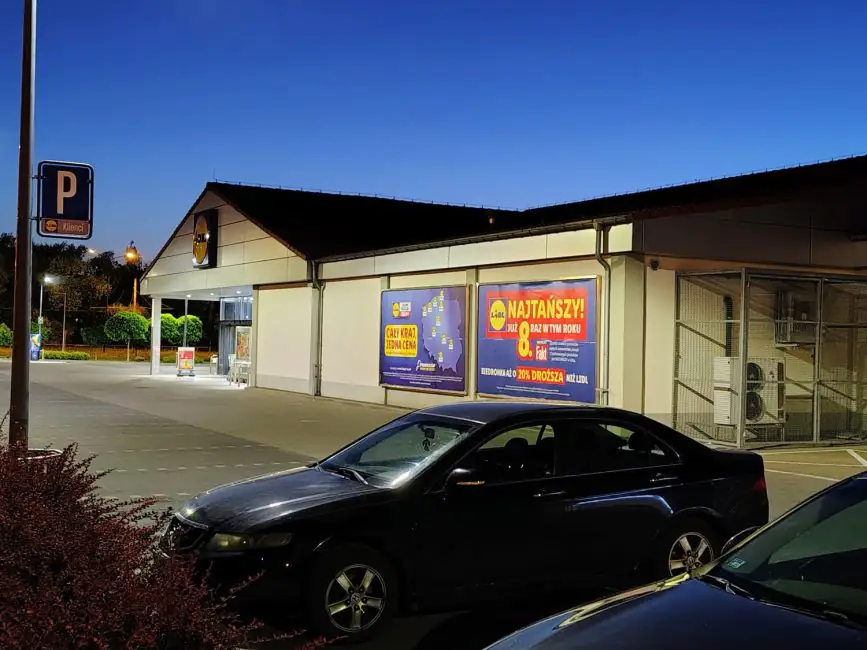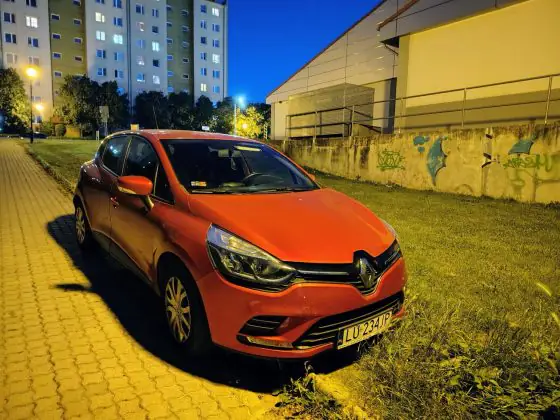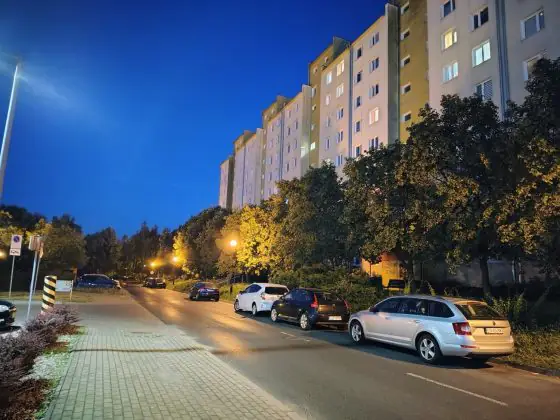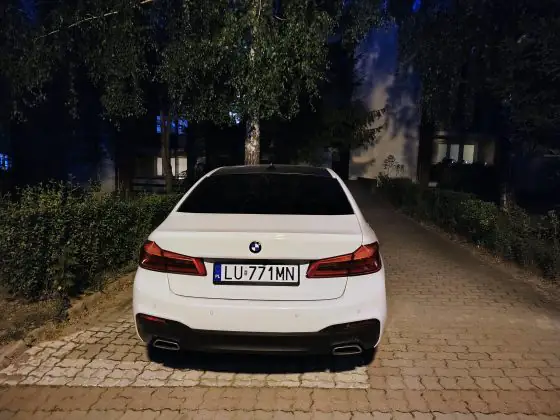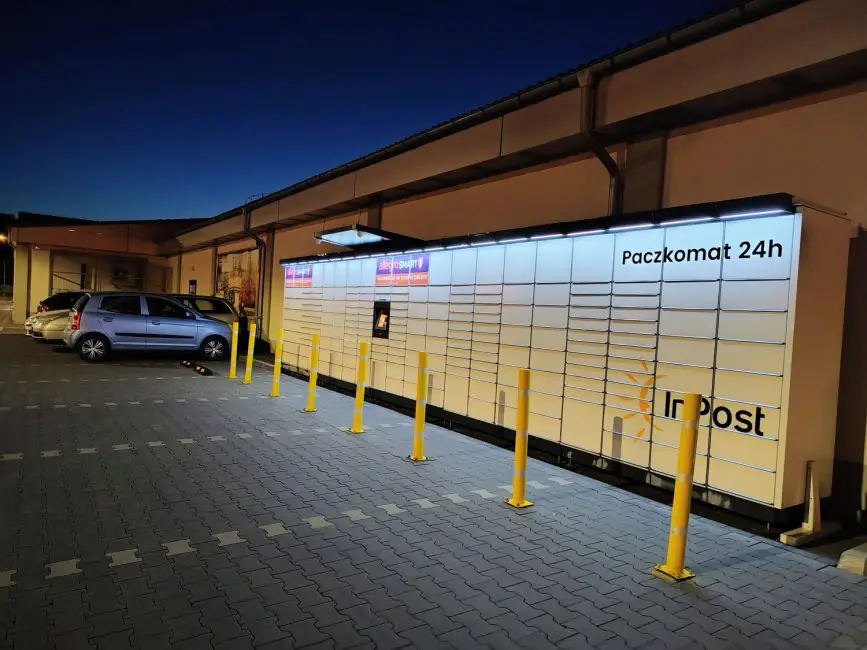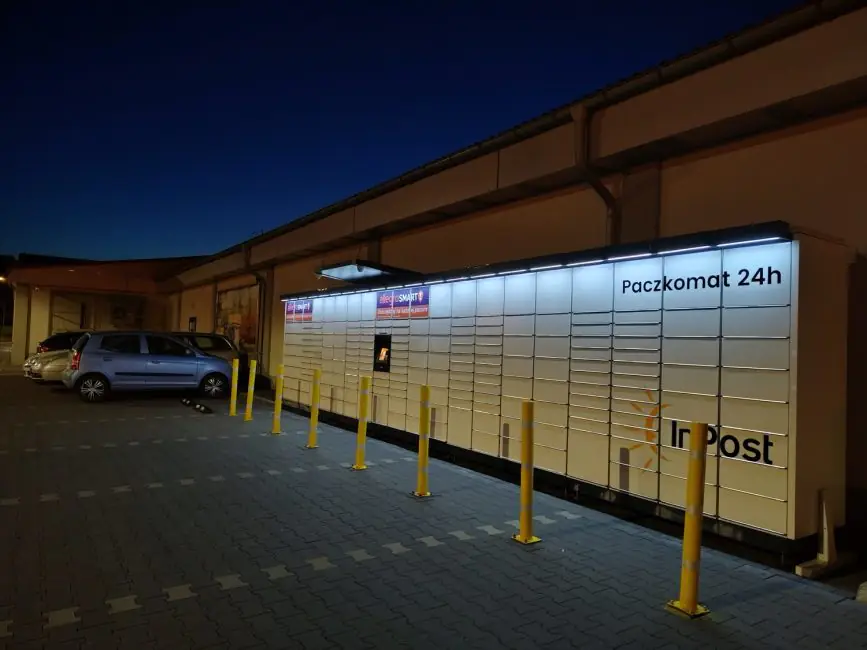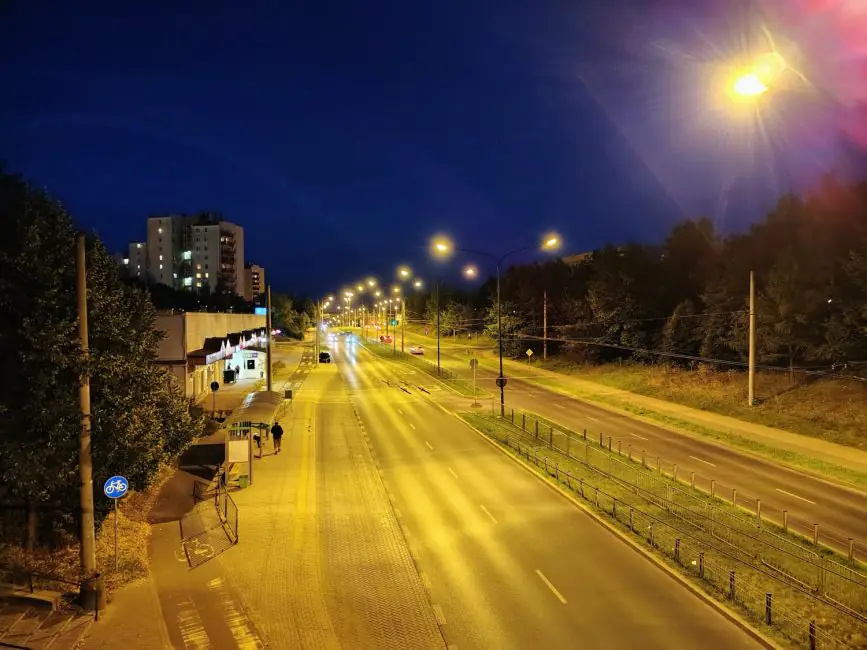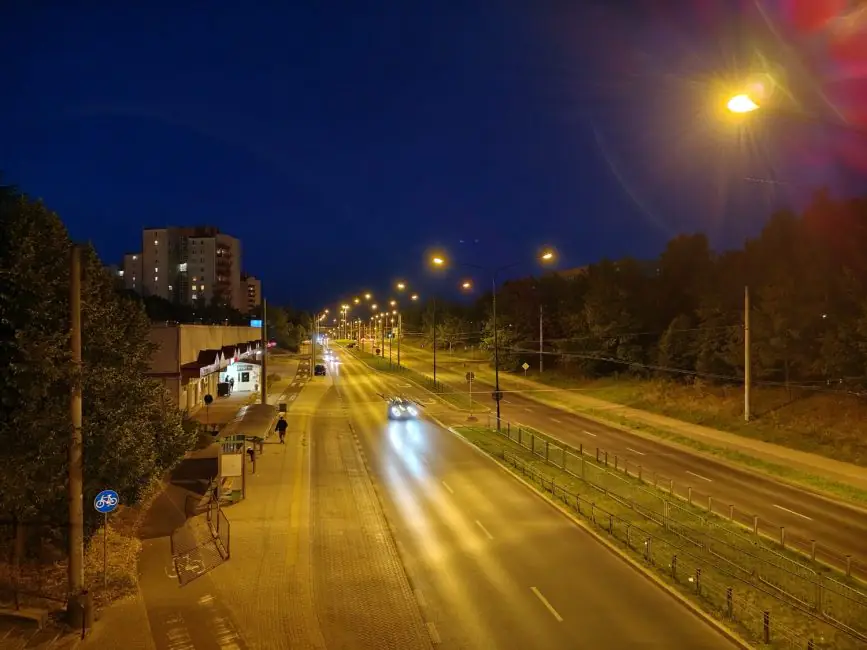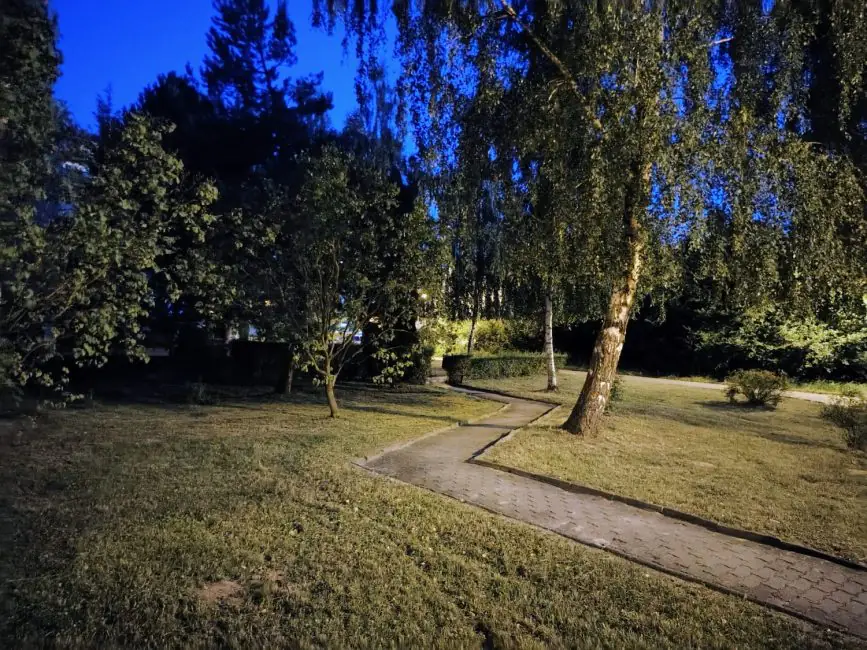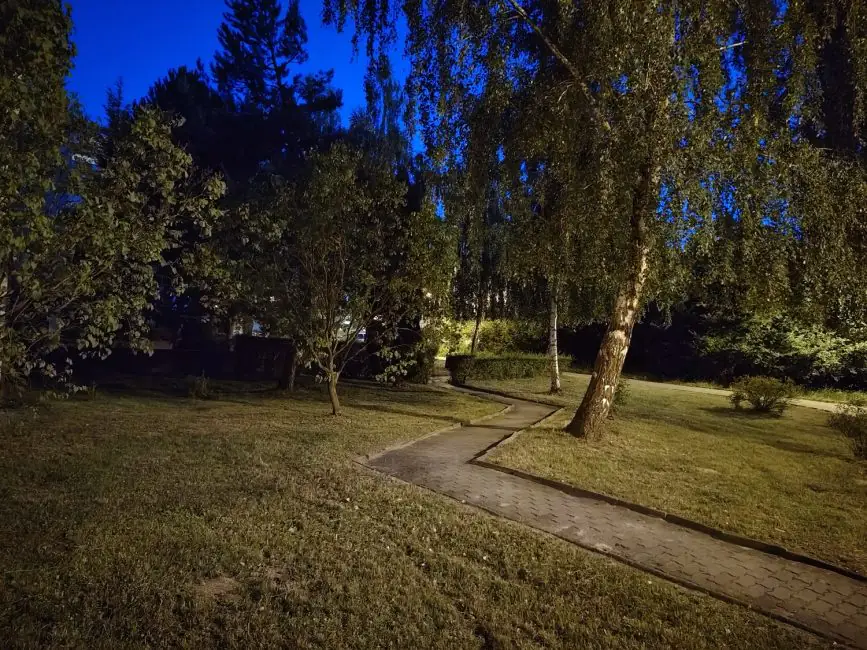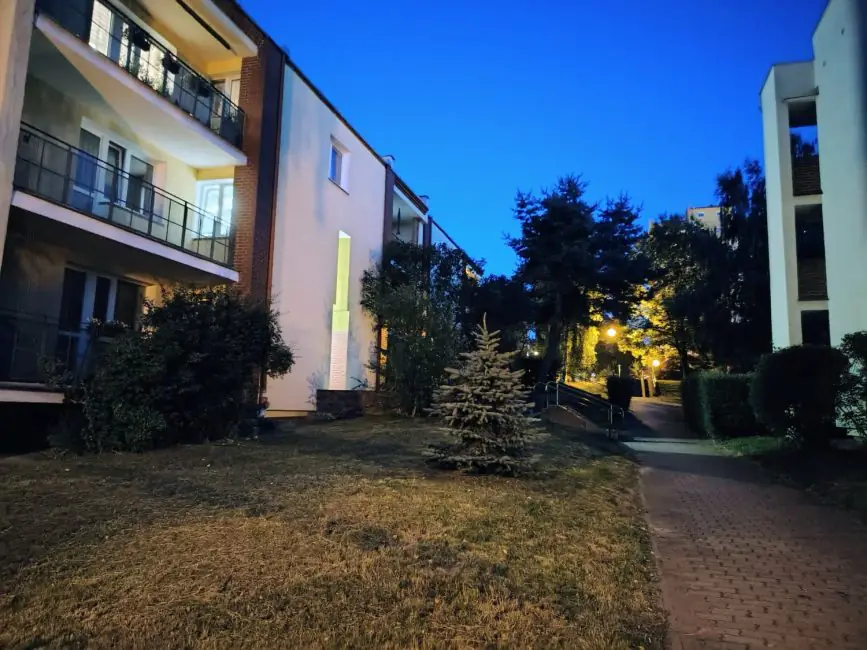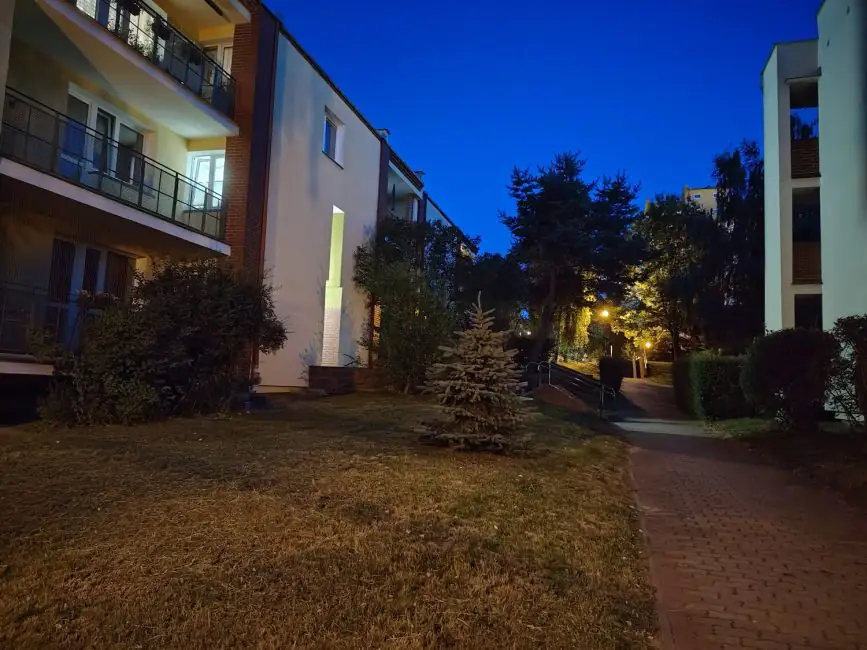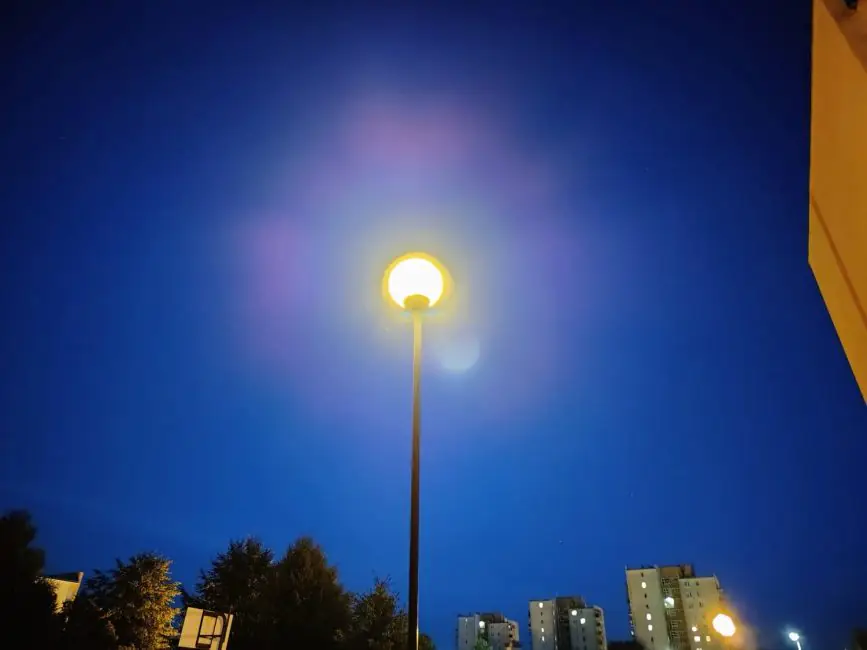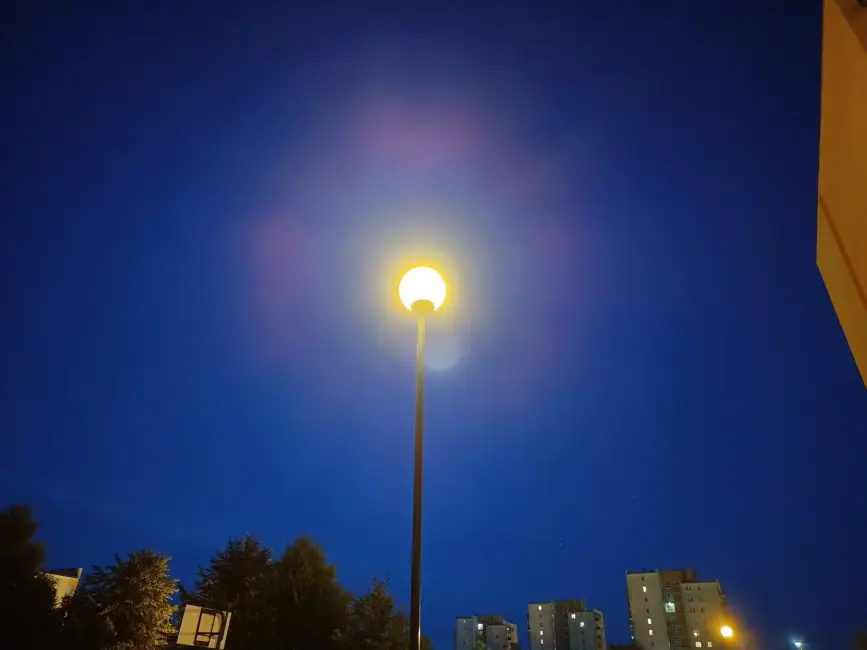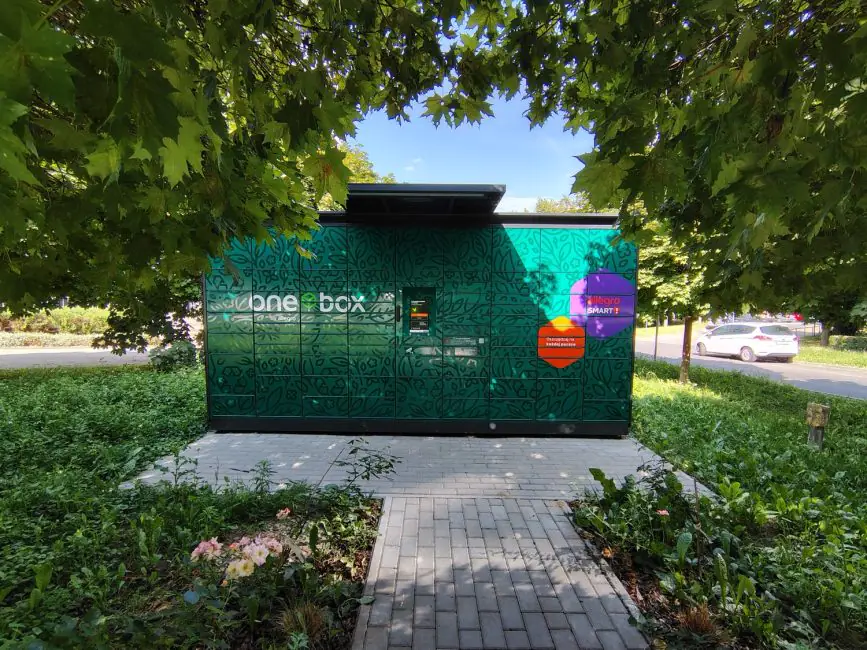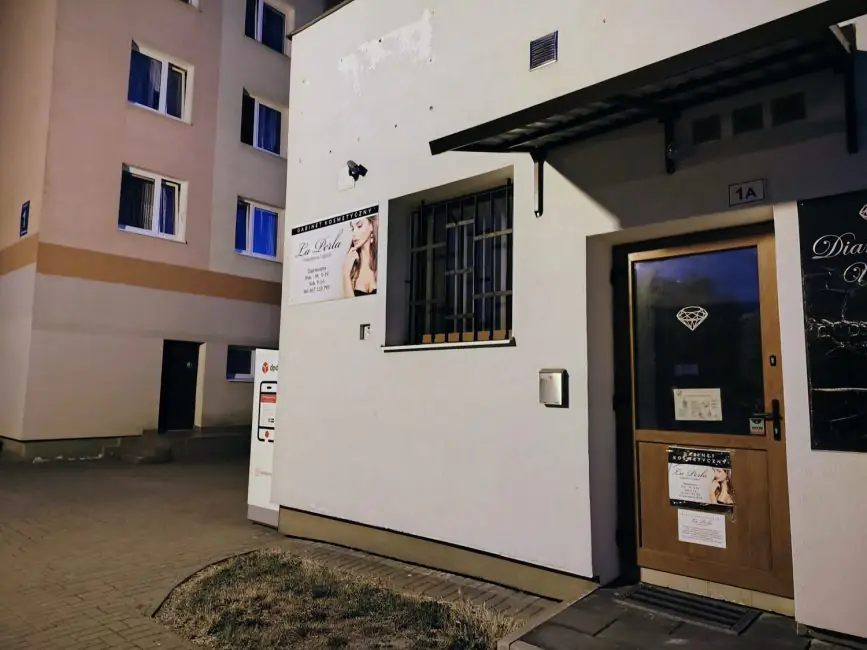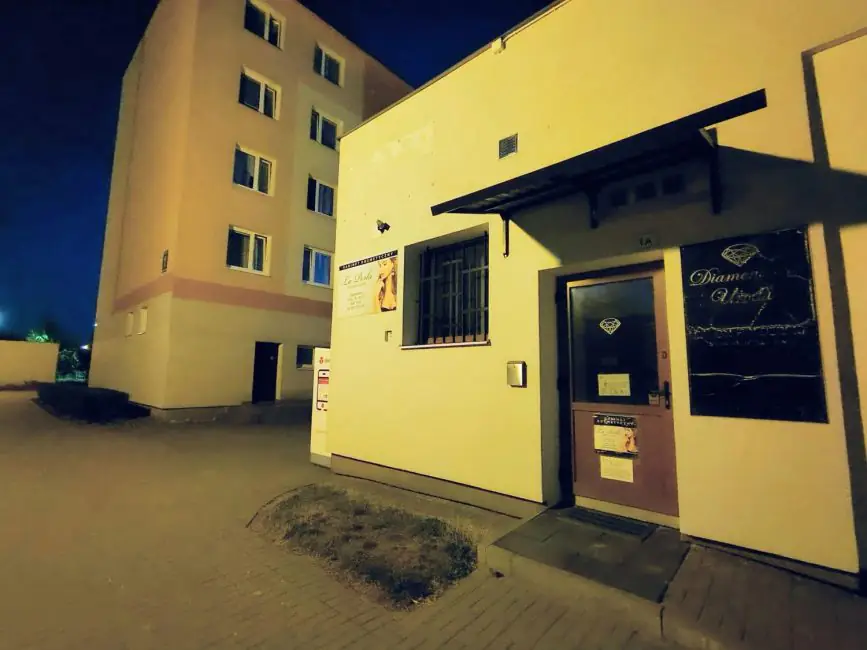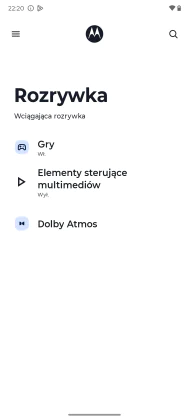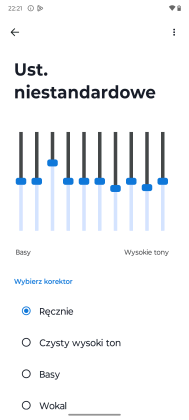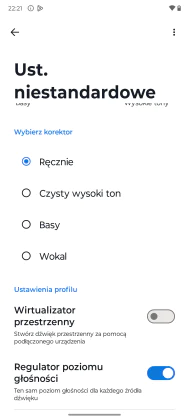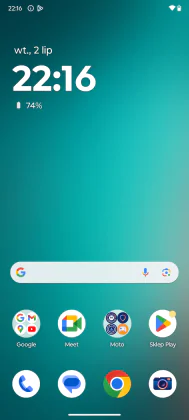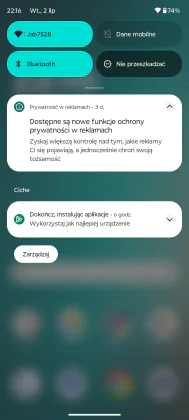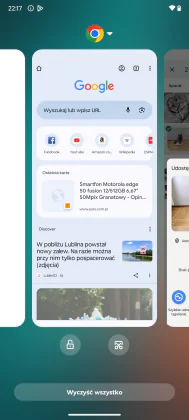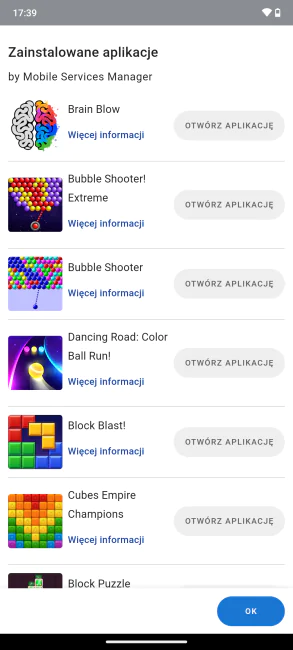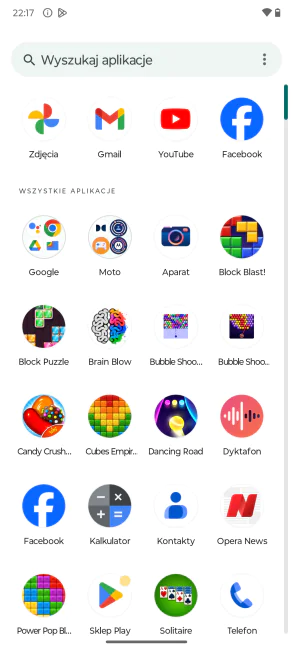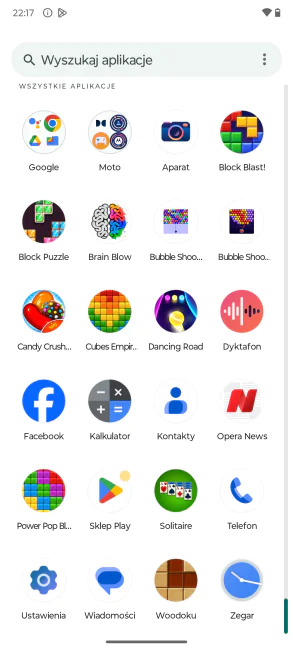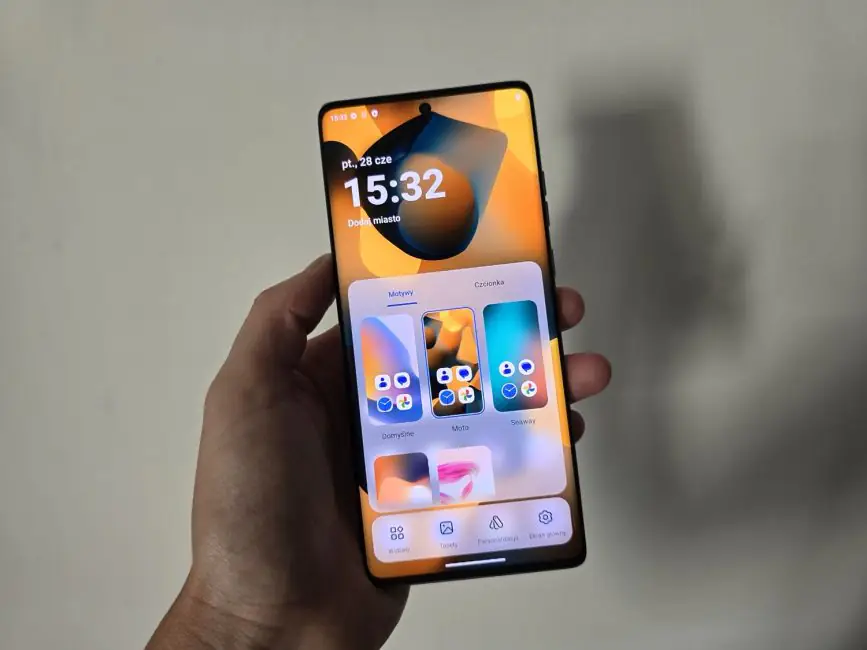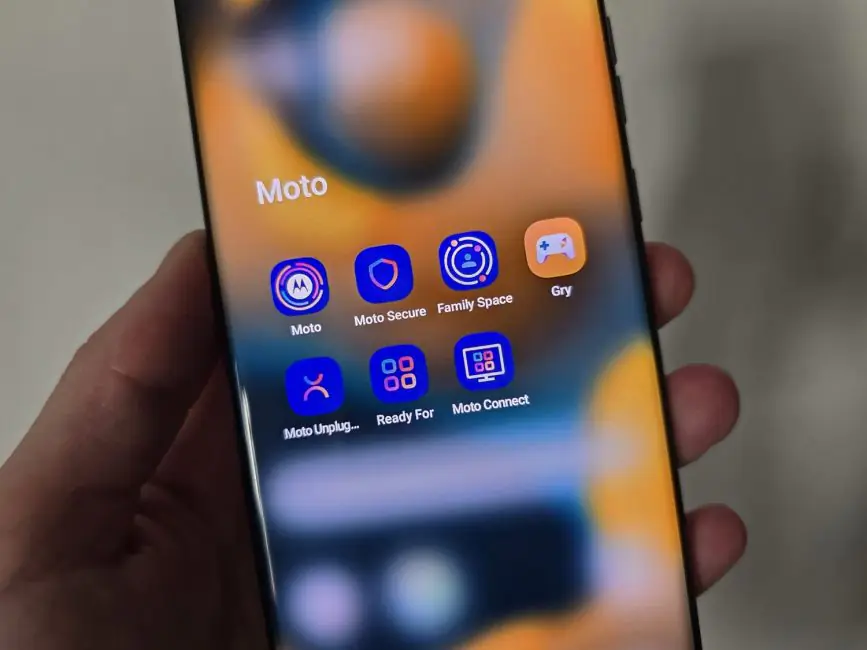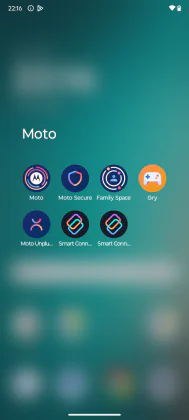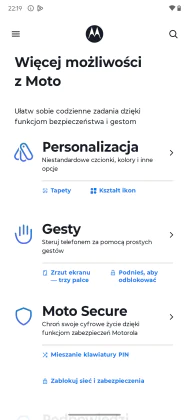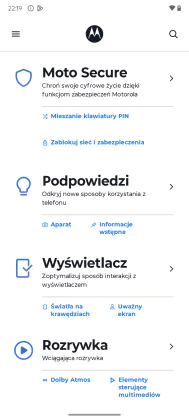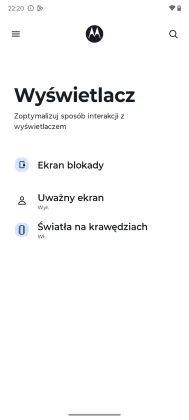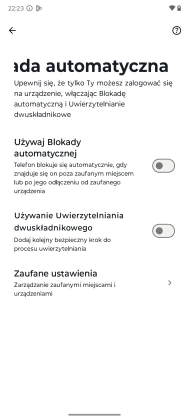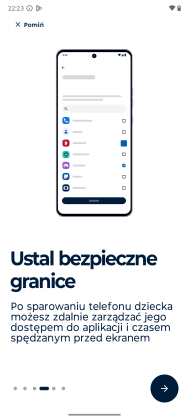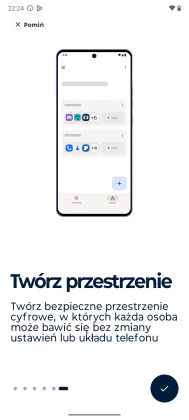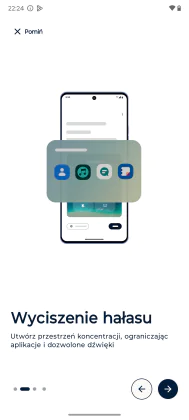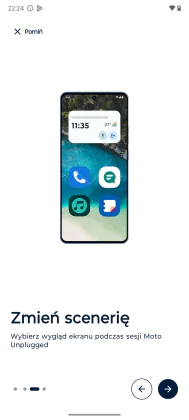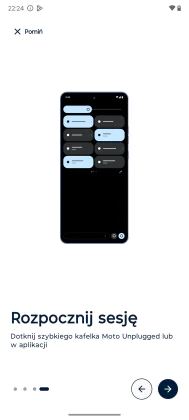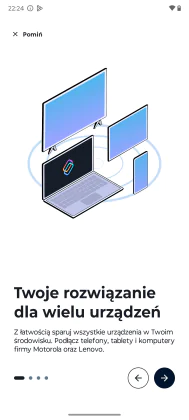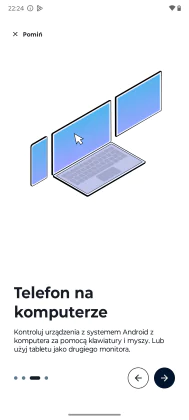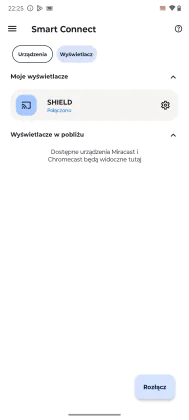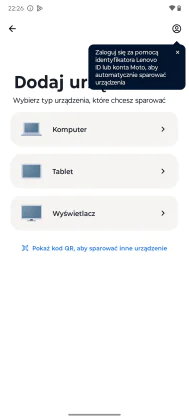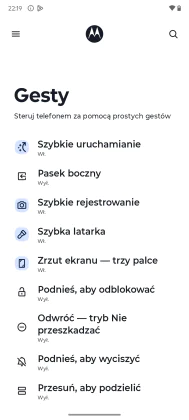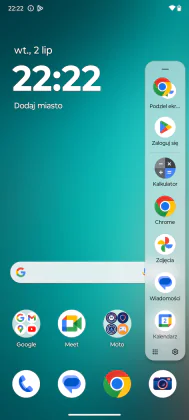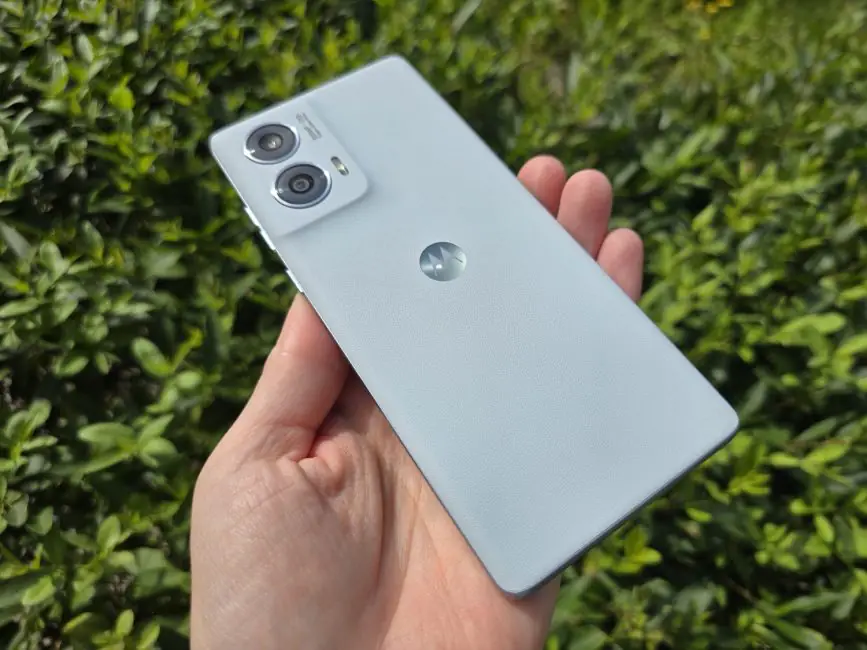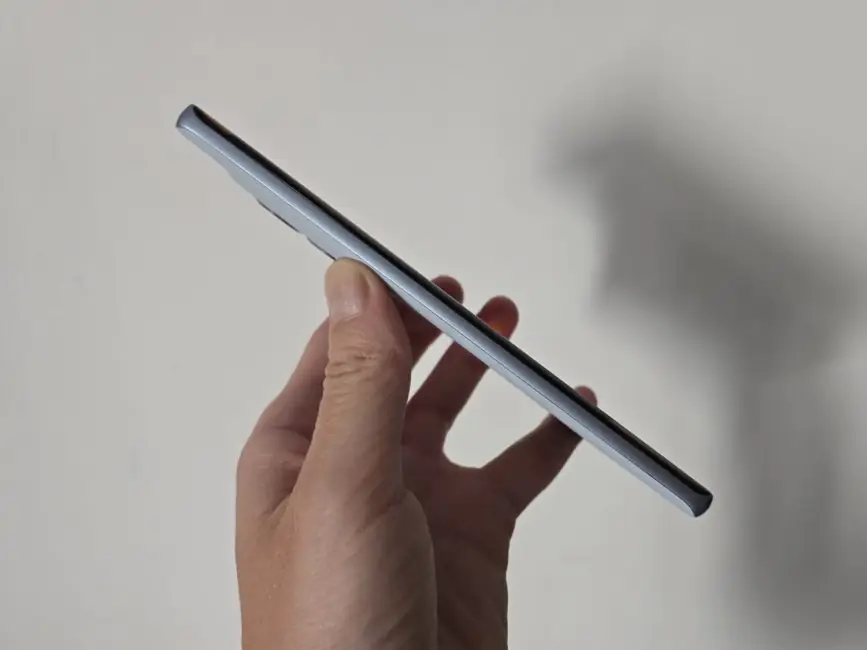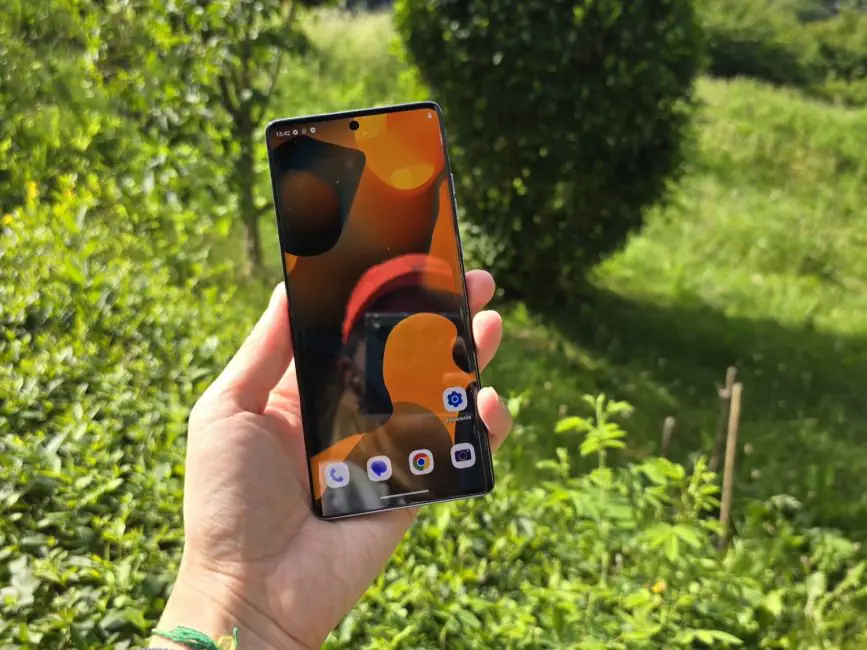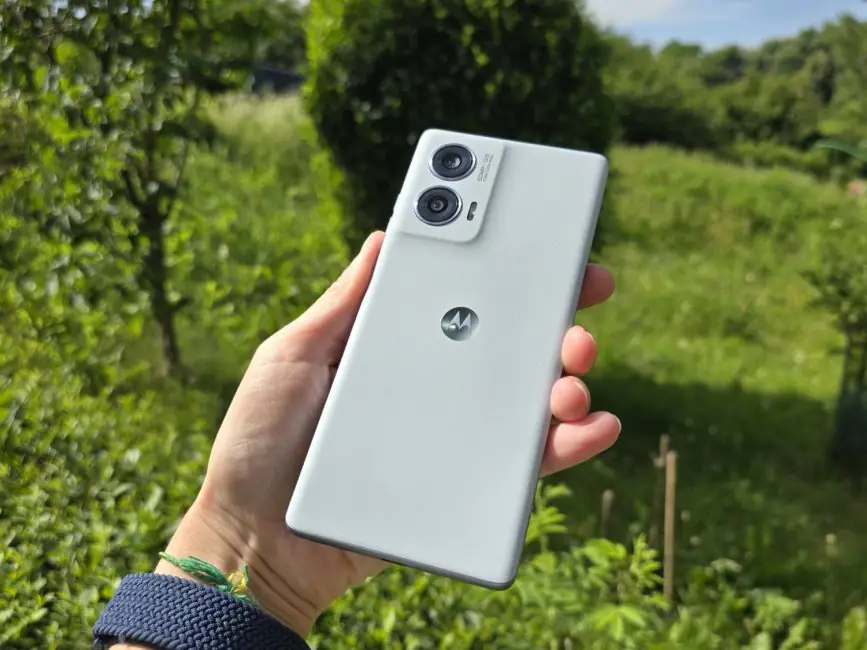© ROOT-NATION.com - Use of content is permitted with a backlink.
Many people really liked the Edge 40 series when it came out. While last year’s models are still available for purchase, the current lineup is now the Edge 50 series. This includes the Fusion, Pro (which we tested), and Ultra models. In this review, we’ll be discussing the entry-level model of Motorola’s premium lineup—the Edge 50 Fusion.
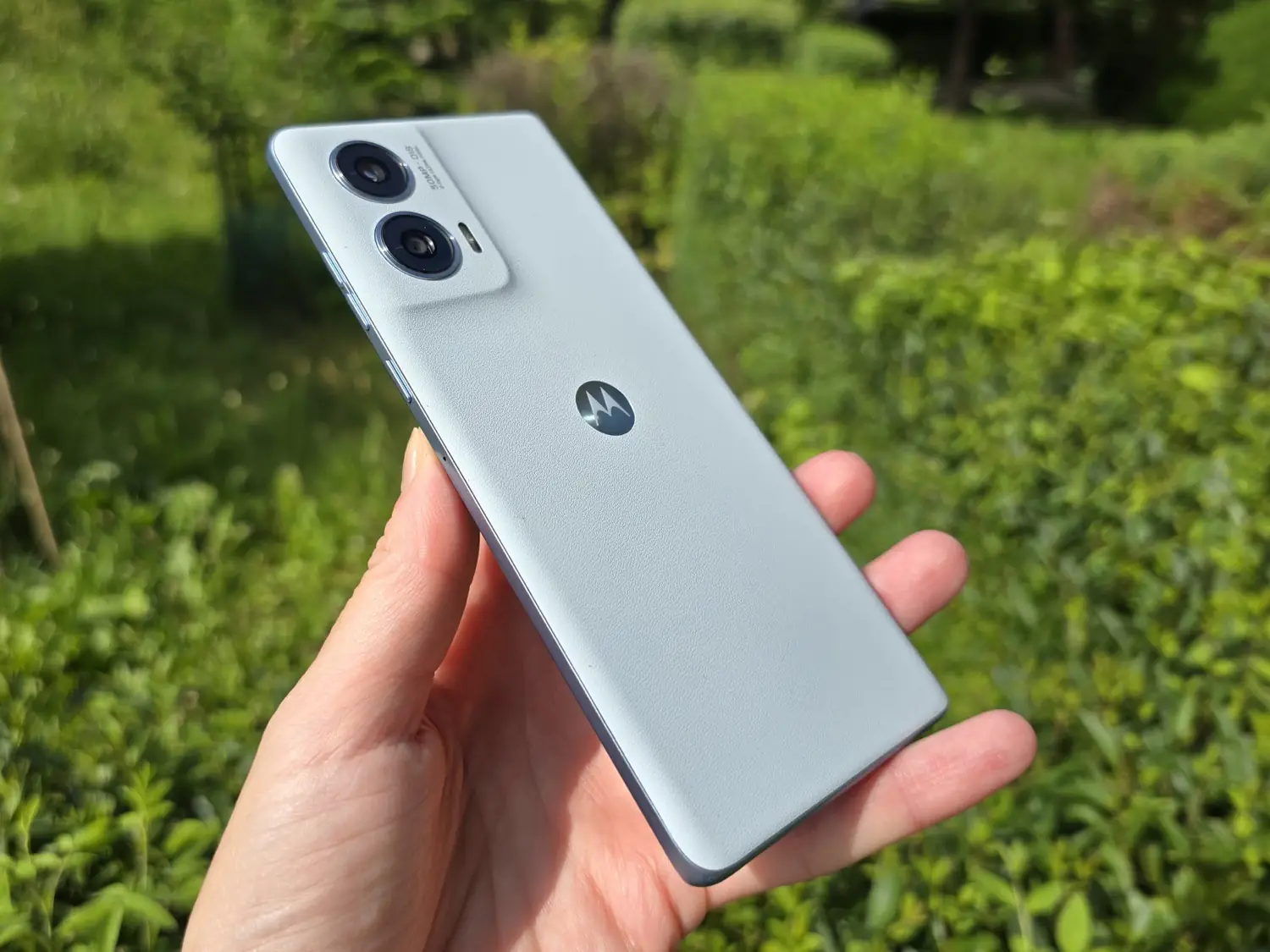
The Motorola Edge 50 Fusion is a 6.7-inch P-OLED display smartphone powered by a Snapdragon 7s Gen 2 processor. It is equipped with:
- dual camera (50 MP + 13 MP wide-angle)
- 32 megapixel front camera
- 5000 mAh battery
- 68 W fast charging
The phone is available in several colors and has water and dust resistance with an IP68 rating. Unlike the higher-end models, it has a slightly less powerful processor, less memory in the base version, a lower-resolution screen, and not the latest versions of wireless modules. However, the “younger” model has a better battery—5000 mAh compared to the 4500 mAh in the Pro and Ultra.
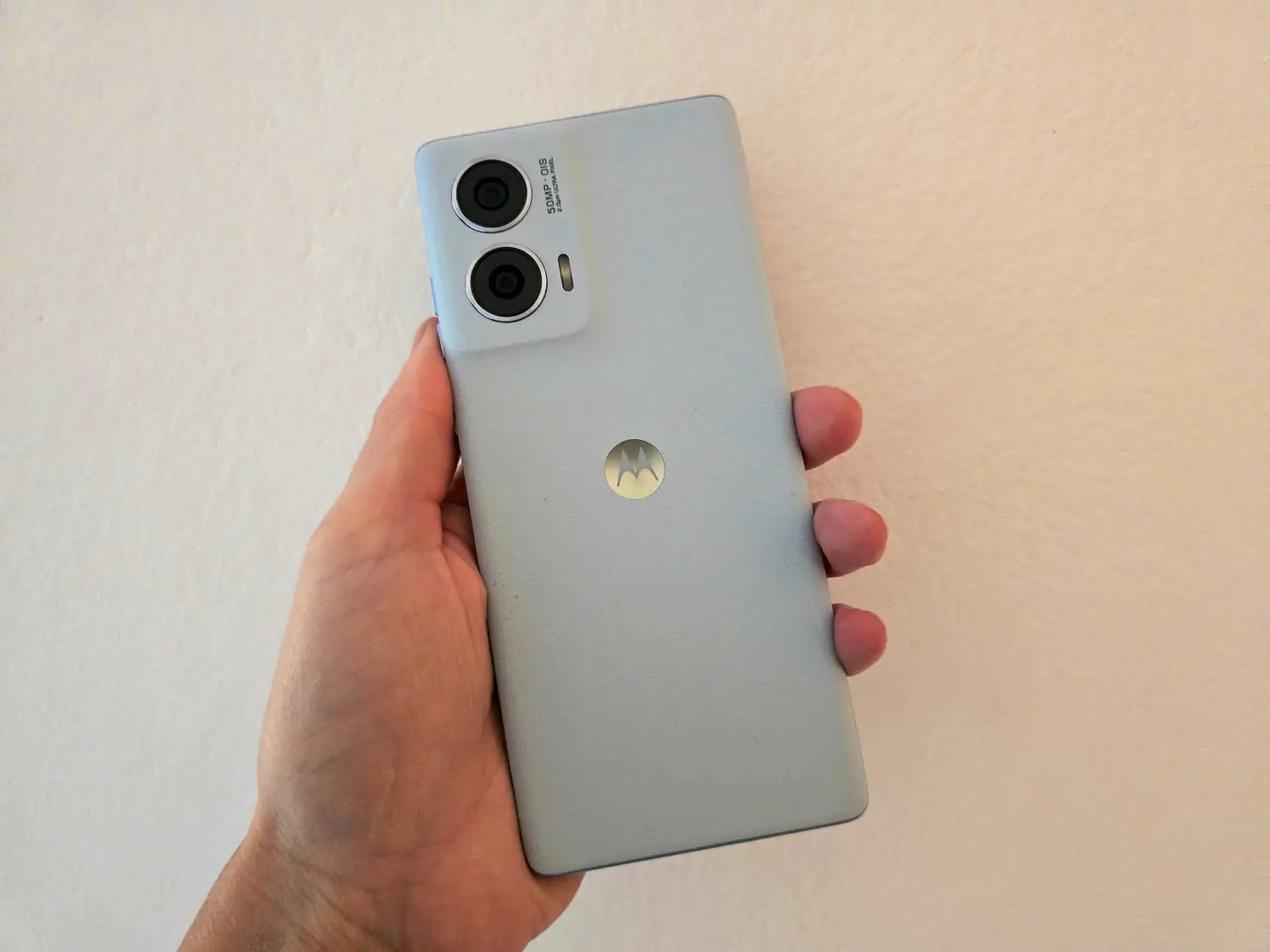
The device costs $363 / €327 for the 8/256 GB version and $428 / €386 for the 12/512 GB version.
Motorola Edge 50 Fusion specifications
- Screen: 6.7″, 1080×2400, 393 ppi, P-OLED, 144 Hz, brightness up to 1600 nits, curved, Gorilla Glass 5
- Processor: Snapdragon 7s Gen 2
- Operating system: Android 14
- RAM: 8/12 GB LPDDR5
- ROM: 12/512 GB UFS 2.2
- Memory card slot: no
- Cameras:
- Main unit 50 megapixels, f/1, PDAF, OIS, 1.0 μm
- Ultra-wide-angle lens 13 megapixel, f/2.2, 120˚, 1.12 μm, autofocus
- Front camera 32 megapixels, f/2.5, 0.7 μm
- Video recording: 4K@30fps, 1080p@30fps
- Battery: 5000 mAh, 68W fast charging
- Connectivity: eSIM, 5G, Wi-Fi 5 802.11 a/b/g/n/ac, Bluetooth 5.2, NFC, USB Type-C 2.0, GPS navigation, GLONASS, GALILEO
- Protection against moisture: IP68
- Fingerprint scanner: under the display
- Dimensions and weight: 161.9 × 73.1 × 7.9 mm, 180 g
Read also: Motorola Razr 50 Review: IPX8 Rating and Huge External Display
Package contents
In the box, you’ll find the phone itself, a 68W charger, a cable, a SIM ejector tool, and a case. As you can see, Motorola, even with its “flagship” lineup, doesn’t follow competitors by removing chargers from the package—which is a good thing.
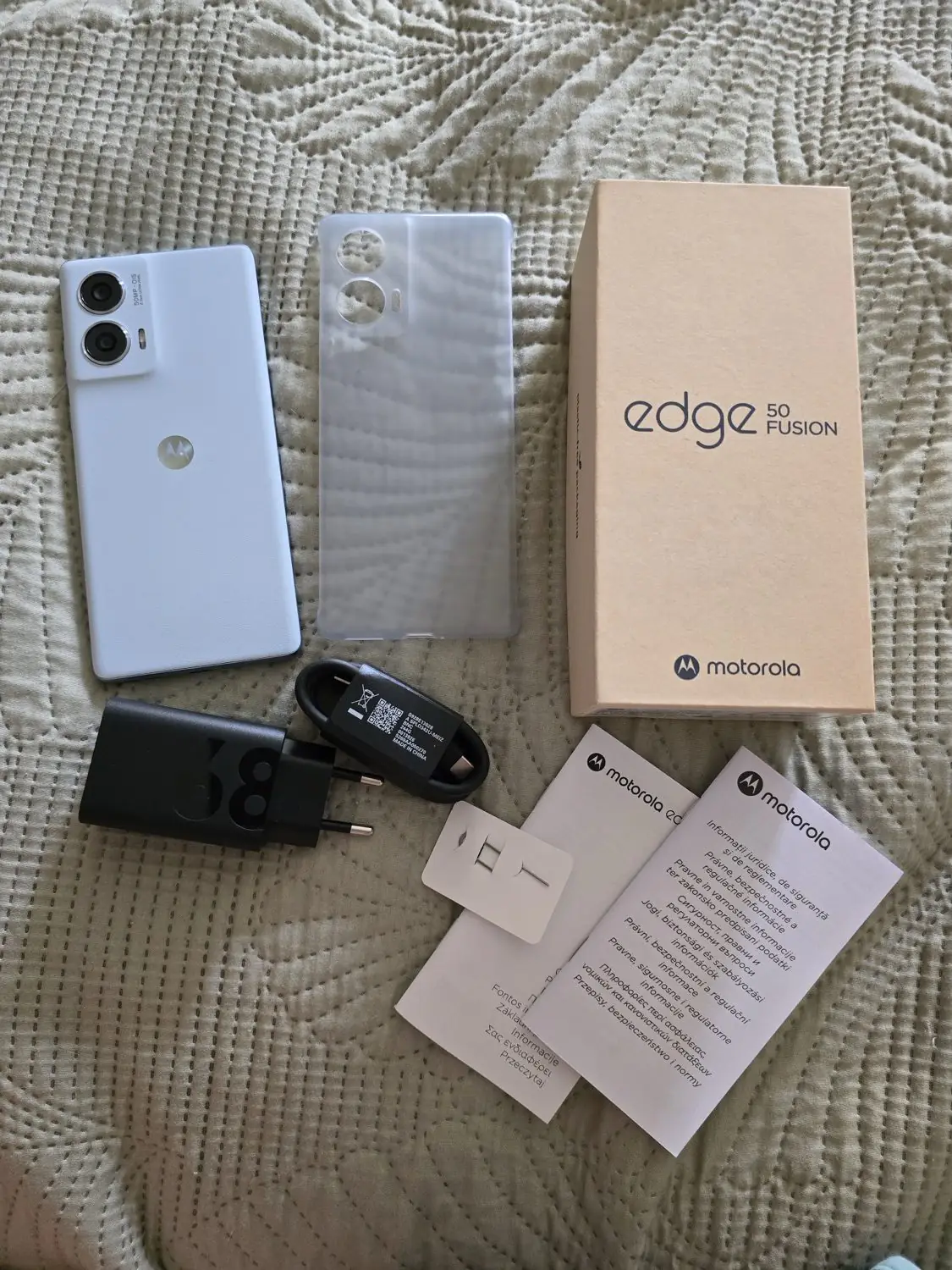 The inclusion of a case is also a nice touch, although it’s hard to call this thin cover a proper case. It will protect against scratches (though not the entire body, as the sides remain exposed), but that’s about it. On the plus side, it doesn’t ruin the phone’s appearance and hardly adds any bulk.
The inclusion of a case is also a nice touch, although it’s hard to call this thin cover a proper case. It will protect against scratches (though not the entire body, as the sides remain exposed), but that’s about it. On the plus side, it doesn’t ruin the phone’s appearance and hardly adds any bulk.
One more thing—Motorola has a tradition of making the phone’s packaging scented. The box itself and all the elements inside have a pleasant fragrance. In my opinion, the scent is more on the masculine side, but it’s not a big deal—just an interesting little touch!
Design
The Edge series has always emphasized style, and the 50 lineup is particularly impressive in this regard. The Pro model, for instance, features a pearl polymer body on an aluminum frame treated with sandblasting. The Ultra model even has a wooden back! The Fusion is simpler but still interesting—the dark blue version uses regular plastic, the white-blue one has eco-leather (which isn’t new and is now seen even in budget Moto models), and the lilac version introduces something new—eco-suede. Unfortunately, I didn’t get to see the lilac version in person; we received the Marshmallow Blue variant for testing (it appears either milky white or blue, depending on the lighting).
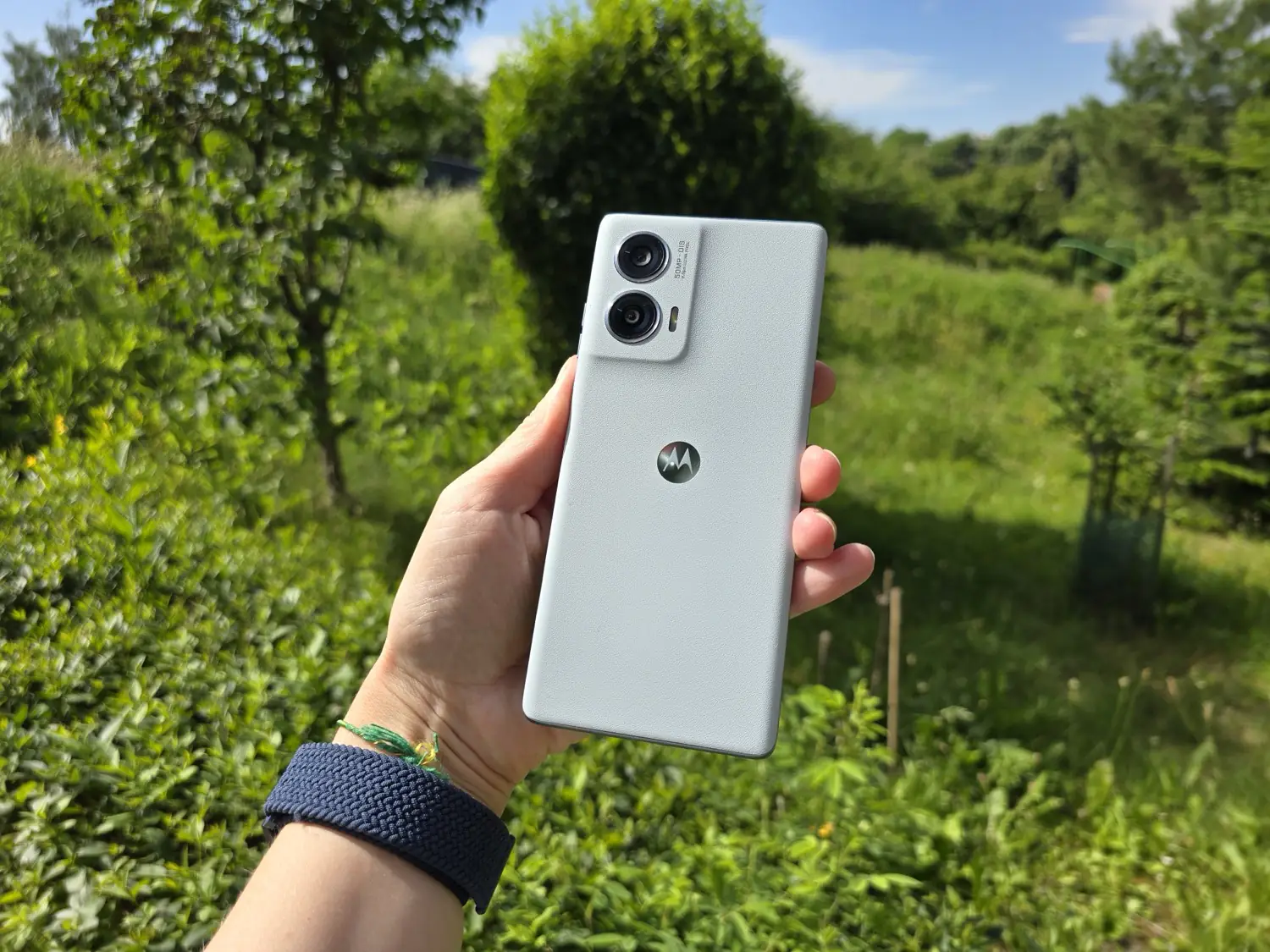 I believe eco-leather is one of the best options for the back panel. It looks great, doesn’t collect fingerprints, and provides a non-slip grip even in dry hands. Plus, it feels incredibly pleasant to the touch! Putting a case on it almost feels like a crime.
I believe eco-leather is one of the best options for the back panel. It looks great, doesn’t collect fingerprints, and provides a non-slip grip even in dry hands. Plus, it feels incredibly pleasant to the touch! Putting a case on it almost feels like a crime.
Although angular designs are currently in vogue, the Motorola Edge 50 Fusion features a body with rounded sides. The edges of the screen are curved, and this contributes to the phone looking and feeling very slim and relatively compact.
The design is overall simple and understated, without any controversial elements like large camera blocks.
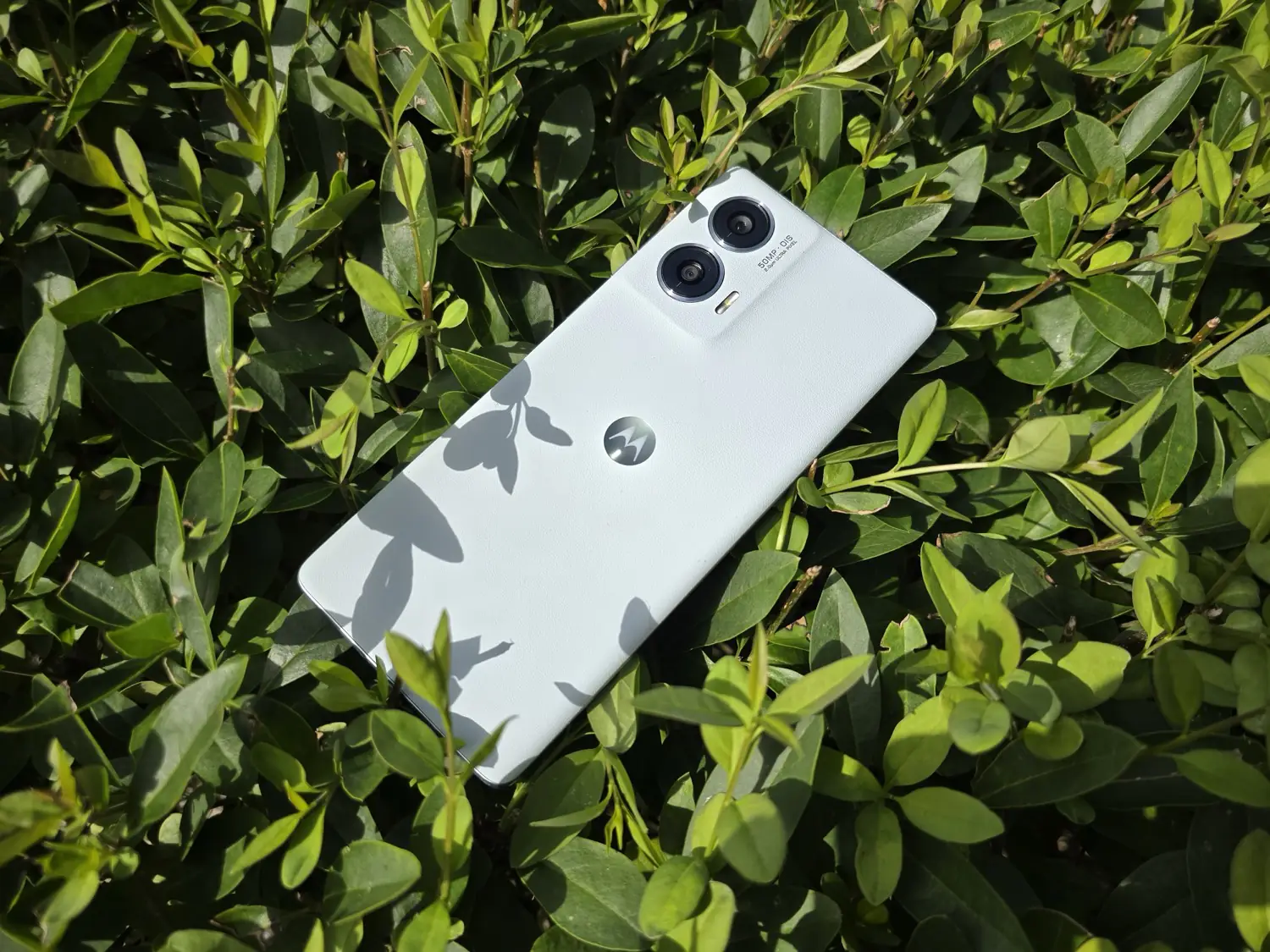
The only thing that slightly cheapens the Motorola Edge 50 Fusion (in terms of touch, not appearance—visually, it looks quite solid) are the plastic side frames, although they appear metallic in photos. And let’s not forget, this is the most affordable member of the premium lineup, starting at $428.
A big advantage in this price range is the IP68 protection, meaning the phone can even be accidentally fully submerged in water without worry.
Read also: Motorola Edge 50 Pro vs Redmi Note 13 Pro+ 5G: The Battle of the Brightest
Screen
Considering its price category, the display on the Motorola Edge 50 Fusion is excellent. The OLED panel is vibrant, with great contrast, deep blacks, and wide viewing angles. Additionally, the rounded edges of the screen give it an “infinite” look, with the bezels being almost imperceptible.
The resolution is Full HD 1080×2400, so clarity is not an issue. The refresh rate is 144Hz, ensuring everything is very smooth. As usual, you can choose between standard, enhanced (120Hz or 144Hz), or adaptive (the best option for battery savings) refresh rates.
The brightness reaches up to 1600 nits. While this isn’t as high as flagship models, it’s sufficient to keep the screen readable in bright sunlight.
The screen has a built-in fingerprint sensor that works without complaint.
Hardware and performance
The Edge 50 Fusion is powered by the Qualcomm Snapdragon 7s Gen 2, a successful mid-range eight-core chipset. The core architecture is 4×Cortex-A55 at 1.95 GHz and 4×Cortex-A78 at 2.4 GHz. The process technology is 4 nm. Graphics are handled by the Adreno 710 chip, and the device offers either 8 GB or 12 GB of LPDDR5 RAM, which can be expanded using available internal storage (256 GB or 512 GB UFS 2.2).
Is the smartphone fast? In everyday use, the performance is always sufficient. The Motorola Edge 50 Fusion handles even the most demanding applications effortlessly in multitasking mode. It can also run games well, though not necessarily at the highest graphics settings, but certainly at quite high ones.
Read also: Motorola Edge 50 Pro Review: Best in Segment
Motorola Edge 50 Fusion cameras
The smartphone features only two modules—a main 50 MP and an ultrawide 13 MP. While this may not be as many as some competitors, quality is more important than quantity. And the quality is excellent, especially since the main module includes OIS. Optical image stabilization helps capture sharper photos and videos, particularly in low light. The ultrawide lens also has autofocus, allowing it to take macro shots and perform much better than basic standalone macro lenses.
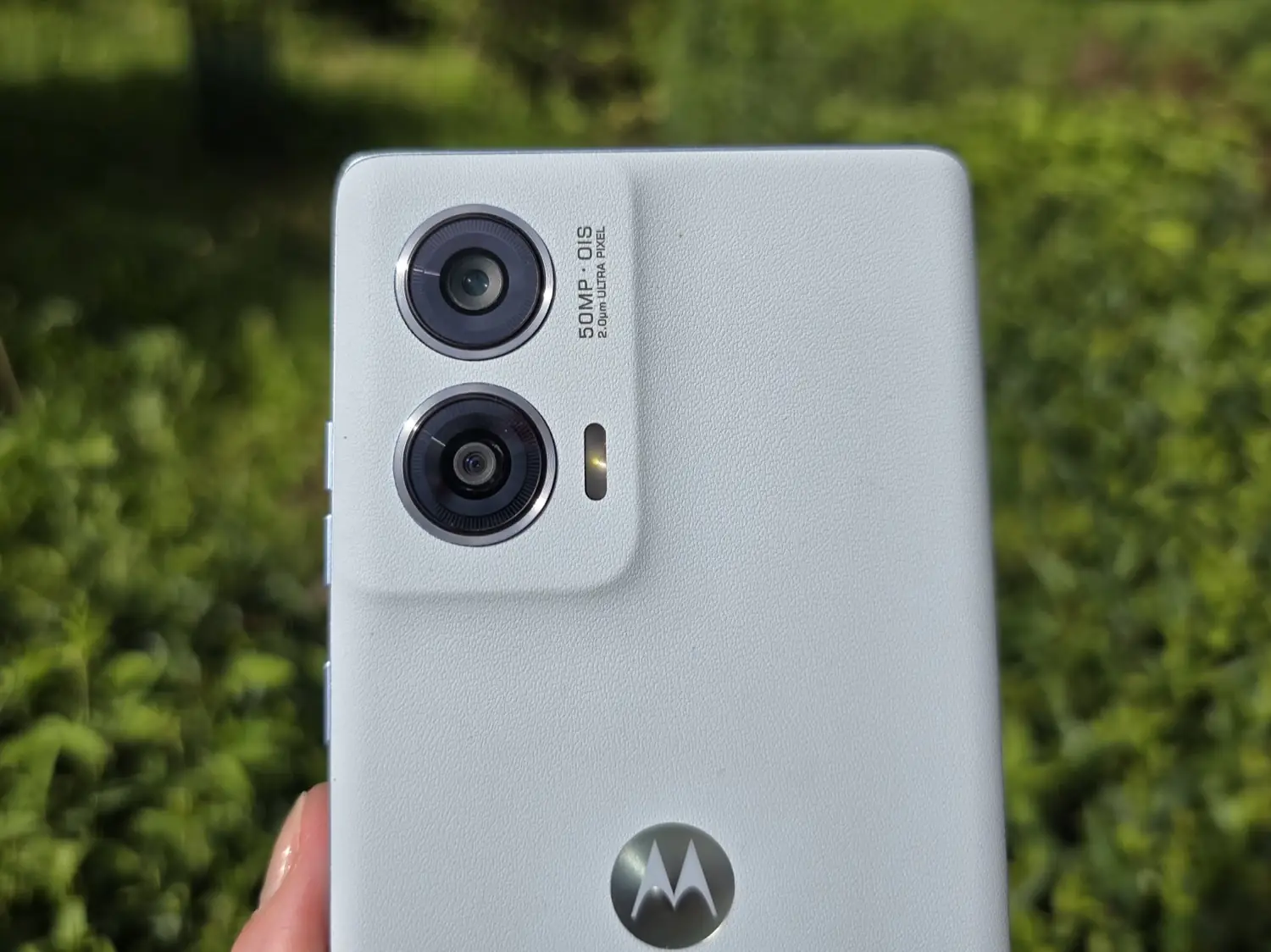 Let’s look at photos from the main module. The color accuracy is excellent, with great sharpness and dynamic range. I would say the quality is flagship-level.
Let’s look at photos from the main module. The color accuracy is excellent, with great sharpness and dynamic range. I would say the quality is flagship-level.
ALL TEST PHOTOS FROM EDGE 50 FUSION ARE AVAILABLE HERE
The only issue that bothered me was post-processing errors. On some HDR photos, you can notice elements that appear doubled. It seems these issues arise during the stitching of multiple shots. Such errors shouldn’t occur even on cheaper phones! It’s possible I received a defective unit for testing. But aside from that, there are no other complaints.
The portrait mode on the main camera is impressive, and it includes options for zoom (simulating different focal lengths).
Since there is no telephoto lens, you can’t expect lossless zoom. You can zoom in the camera interface, but the quality leaves much to be desired. See for yourself:
The main camera performs quite well with night photos, delivering excellent color tones and an atmospheric image.
You can separately enable the night mode, and I have mixed feelings about it. By default, photos come out bright and well-lit. In night mode, they often appear darker. This is surprising because, in most phones, it’s the other way around. So it’s a matter of personal preference—try both and see what you like. I should note that night mode photos are generally sharper, with better processing of light elements. Here’s a comparison, with night mode on the right:
There are no major complaints about the ultrawide lens. In good lighting, it captures almost as well as the main camera. At night, results can vary, with more digital noise and some “mushiness” in the corners, but overall, the photos remain decent. Here’s the ultrawide shot on the right:
What I love about this lens is its macro capability! Most mid-range phones come with 2 MP or, at best, 5 MP macro modules that take… terrible photos. The best option for macro shots these days is a wide-angle lens with autofocus. And that’s exactly what the Motorola Edge 50 Fusion uses. Check out the sample shots:
The front camera takes nice photos with natural color reproduction. However, if the lighting is less than ideal, there might be some softness in the images.
The video quality is generally acceptable for the price range, but at 60 fps, the footage can occasionally appear a bit “wobbly.” Choosing 4K resolution adds to the issue with even more noticeable jitter, so I’d recommend using Full HD at 30 fps for the best results. At night, it’s best to avoid filming altogether as the quality is poor and the camera frequently loses focus, as shown in the examples below.







Data transfer, sound
The phone supports 5G, dual-band Wi-Fi ac, Bluetooth 5.2, and NFC for payments. For effective navigation in urban or outdoor settings, it has GPS, GLONASS, and GALILEO modules. It also supports the popular but less common feature in mid-range models—eSIM.
 The phone features stereo sound, with one speaker located on the bottom edge and the other serving as the earpiece. The sound quality is very good. Dolby Atmos effects are available, including several presets and a customizable equalizer, as well as Spatial Audio for an immersive sound experience.
The phone features stereo sound, with one speaker located on the bottom edge and the other serving as the earpiece. The sound quality is very good. Dolby Atmos effects are available, including several presets and a customizable equalizer, as well as Spatial Audio for an immersive sound experience.
Read also: Motorola Moto G Lineup Review: G14/24/24 Power/32/54/72/84
Motorola Edge 50 Fusion software
The Motorola Edge 50 Fusion runs on the latest version of Android 14. The system is almost “clean,” but Motorola refers to it as Hello UI.
I didn’t find any unnecessary pre-installed software except for the Opera News app. However, during the initial setup, I agreed to install a game package and ended up with unwanted games that I later had to remove.
I’ve been testing Motorola phones for many years, and I can say that their software has improved significantly recently. It still runs smoothly and is well-optimized, but now it looks much more appealing than before. For instance, the lock screen has been updated recently.
Moreover, Motorola has significantly expanded and improved the range of built-in applications. Previously, there was only the Moto Features app, but now we have Moto Secure for data protection management (including Lenovo’s ThinkShield security and privacy features), Family Space (with access to software of your choice), Games (useful options when playing games), Moto Unplugged (access only selected apps so your phone doesn’t distract you unnecessarily), Moto Connect (wireless access to your TV and monitor screen), Ready For (your smartphone works like a PC when connected to a TV or monitor – we have a Windows-like interface), SmartConnect (connectivity between Moto and Lenovo devices).
There are also useful features like a side panel for quick app launches, windowed mode, and split-screen functionality. And of course, there are the well-known and beloved Moto gestures, such as double-shaking to turn on the flashlight or twisting your wrist to open the camera. Additionally, there are interesting themes, custom fonts, and even the Style Sync feature, which uses AI to create wallpapers from your photos. As we know, AI is everywhere these days!
Motorola promises three Android updates for the Edge 50 Fusion (which means we’ll get version 17) and four years of security patches. Quite impressive!
Battery and operating time
The battery capacity is typical for modern smartphones—5000 mAh. Since the phone doesn’t have an extremely high-resolution screen or a particularly powerful chipset (unlike the older models in the lineup, which only have 4500 mAh), we can expect a relatively long battery life.
If you use the phone very actively throughout the day (photos, web browsing, light gaming, calls, social media), you’ll still have around 20% battery left by late evening, at least that was my experience. On average, the phone delivers about 7-8 hours of screen-on time at above-average brightness with adaptive refresh rate. In this regard, the Edge 50 Fusion significantly outperforms its older “sisters,” the Pro and Ultra models.
With the Motorola Edge 50 Fusion, you get the Motorola 68W TurboPower charger. In 15 minutes, it charges nearly 40% of the battery; in 30 minutes, it reaches about 60%. For a full charge, it takes an hour—quite acceptable results.
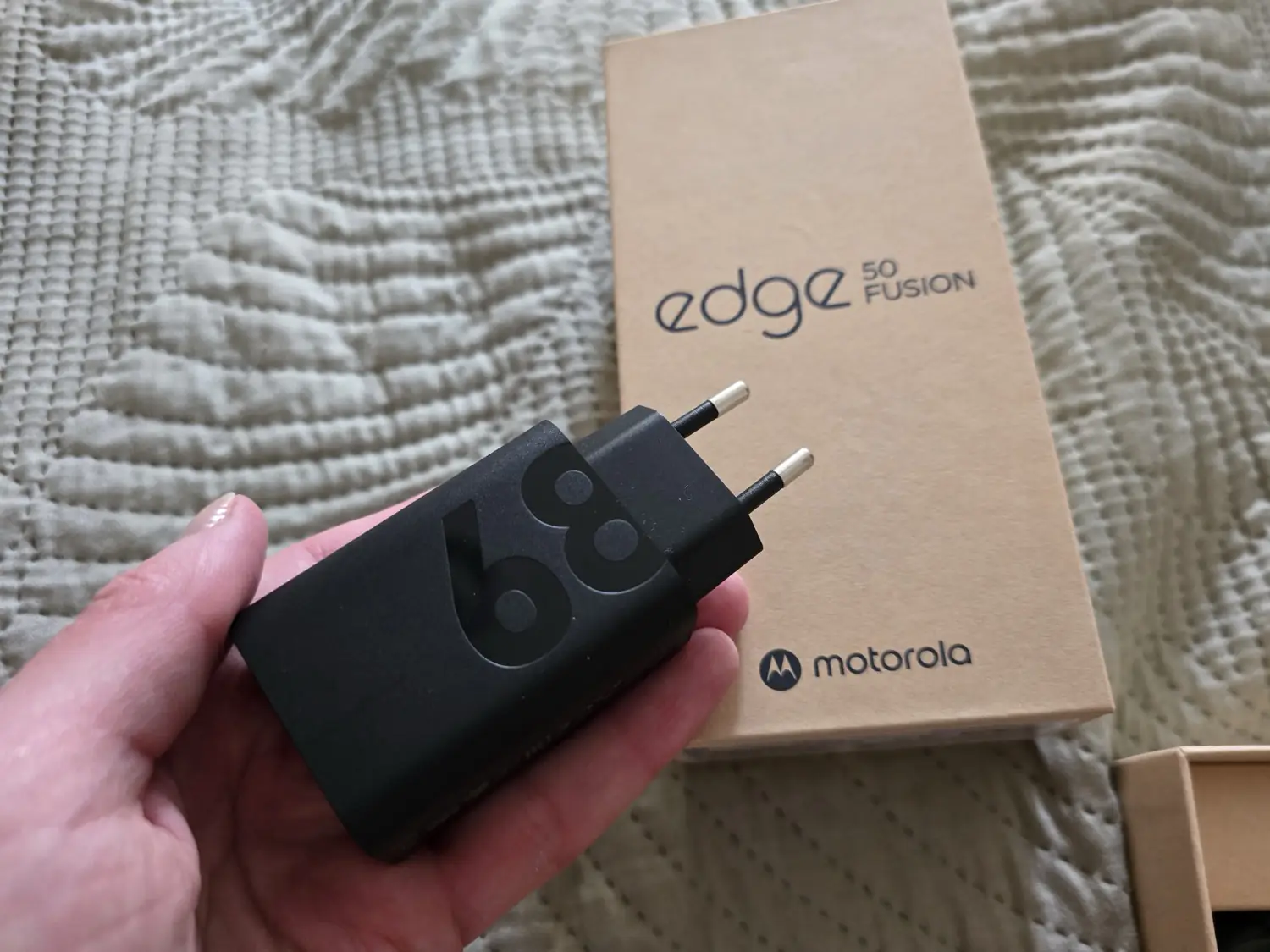
Conclusions
I’ve always liked Motorola smartphones for their great balance of price and quality, well-designed aesthetics, and good software and hardware optimization. It’s true that not all of the company’s models have been successful—some have been underwhelming or overpriced. I used to approach the Edge series with some caution, as the phones seemed attractive and functional but often had their share of compromises. However, I can say that the Moto Edge 50 Fusion is probably the most well-balanced of the three. The standout from the previous series was the Edge 40 Neo.
The Edge 50 Fusion features a fantastic design, with a sleek, slim body available in eco-leather or eco-suede, a substantial 5000 mAh battery with fast charging, a great display, and a speedy, though mid-range, processor. The cameras might not be perfect, but considering the price, the main module is very good, and the wide-angle lens can capture beautiful macro shots. All of this can be yours for just $363 / €327 for the 8/256 GB version, and even $428 / €386 for the 12/512 GB model is quite reasonable.
Are there competitors? Yes. For example, the Redmi Note 13 Pro 5G with 12/512 GB is cheaper than the Edge 50 Fusion with the same storage. However, its 200 MP camera isn’t necessarily better and includes an unnecessary macro lens. The water resistance is lower, and the Xiaomi interface is quite polarizing—Motorola’s is better. The screen resolution is higher on the Redmi Note 13 Pro, which is a benefit, though not critical for everyone.
The POCO X6 Pro 5G with 12/512 GB has a more powerful processor but isn’t as appealing in other aspects. However, the POCO F6 12/512 GB is worth noting with its top-tier Snapdragon 8s Gen 3 chipset and 90W charging. It costs almost $30 more, at $459 / €414. For $460, you can also get the Redmi Note 13 Pro+ 12/512 GB, which features good cameras, a flagship MediaTek Dimensity 7200-Ultra chip, 120W charging, and IP68 protection.

If having a telephoto lens is important to you, consider the realme 12 Pro 5G with 12/256 GB. It’s not the cheapest at $353 / €318, but it offers a decent zoom (though its other specifications are average). Overall, the choice is yours!
Read also:
- Report and Video from the ASUS Booth at #IFA2024 – All the New Releases
- HONOR 200 Lite Smartphone Review: An Imperfect Mid-Ranger
- Review of PC with the Gigabyte Radeon RX 7900 GRE Gaming OC 16G: Can a Powerful Graphics Card Compensate for a Weak Processor?



